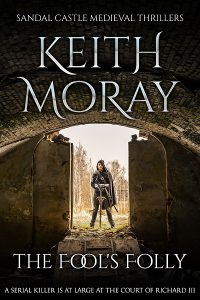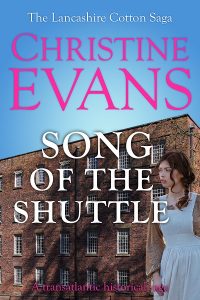Stephen Taylor is the author of A CANOPY OF STARS, a thrilling historical 19th century saga stretching from the legal courts of Georgian London to the Jewish ghetto in Frankfurt.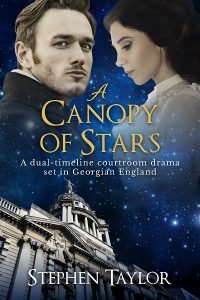
When I start to write a novel, the first thing I always do is open a document that I call ‘Conceptualising’. I put down my initial thoughts, sketch out a skeleton storyline. Then I start researching and populate this document with historical facts and ideas that I can use.
When I came to write A CANOPY OF STARS, my first port of call was a website — Punishment at the Old Bailey: Old Bailey Proceedings Online. Here I could view actual cases going back hundreds of years. I came across the trial of Peter Shalley (REF: T17900113-17) that took place in 1790. Shalley was a German immigrant who was accused of the theft of half a sheep’s carcass worth just 40 shillings. His story, through an interpreter, was that he was offered a shilling to carry the carcass to Oxford Road from a field outside London. When he said he didn’t know where Oxford Road was, the man said: ‘Don’t worry, I’ll walk behind you and each time you come to a junction, look behind you, and I’ll point which way to go.’ When he got to Oxford Road, the Watchman challenged him, and the other man ran away. To me, this was a reasonable defence — he had been duped.
But the system was stacked against him, for while he was an educated man, he was a Jewish immigrant and spoke little English; he was seen as just another piece of London’s low life to be dispatched by the hangman with little ceremony and no one to mourn him. Even the valuation of the sheep at exactly 40 shillings made it a felony (not a misdemeanour) and therefore punishable by death.
I found this disturbing; it may have been over two hundred years ago, but I was stung by the injustice of the case. I was upset; the wrong done to this man was so plain to see and became like a nagging toothache. So I resolved to restructure A CANOPY OF STARS; it would still be a Georgian courtroom drama, but — through the character David Neander — I would also write Peter’s own story as I saw it. Images danced in my mind; what sort of man was this Peter? Why had he left his native Germany; why had he come to England?
In England, this was a time of the enlightenment; there was a clamour for reform. Power, however, lay in the hands of the aristocratic landowners who viewed reform as a threat. In the German states, this was a time of nationalism, a distrust of all things un-German. This is the backdrop to David’s story. How did he navigate his way through it?
Click here to order A CANOPY OF STARS
Marilyn Todd’s witty and atmospheric Julia McAllister Victorian Mysteries follow a courageous female photographer-cum-sleuth as she investigates London’s shadiest characters.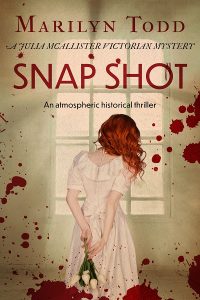
The first two books in the series — SNAP SHOT and CAST IRON — are already published, and we are delighted to have signed up the next two instalments.
In Marilyn’s words:
“I’m thrilled to be continuing Julia’s story, and quite frankly, having this series in the hands of a dynamic publishing team like Sapere is the icing on the cake!
“The third instalment, BAD BLOOD, sees Julia tasked with photographing the scene of a factory owner’s murder. A man who treated his workers like dirt, and his wife even worse. It’s not so much a question of who’d want him dead — more who wouldn’t. But eight years earlier, his son was abducted, and Julia soon realises that the kidnap and murder are connected. The trouble is, knowing who’s responsible is one thing, proving it is quite another. Especially when the killer knows she’s on to them.
“This is followed by DEAD DROP. Music halls were a popular antidote to the noise and smoke belching out of the Industrial Revolution, but the lives of the entertainers were gruelling. When a young showgirl is found hanged, Julia doesn’t believe it was suicide. Too late, she discovers that the truth hurts, but secrets kill, putting her own life on the line…”
Click here to find out more about the Julia McAllister Victorian Mysteries
Elizabeth Bailey’s Regency-era Lady Fan Mysteries follow Ottilia, a courageous woman sleuth faced with gruesome deaths, buried scandals, witch hunts and more.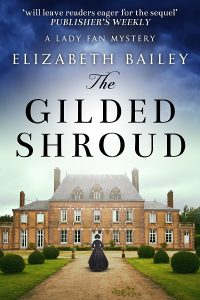
The first six books in the series are already published, and we are delighted to have signed up the seventh, THE DAGGER DANCE.
In Elizabeth’s words:
“In THE DAGGER DANCE, Lady Fan is off to rescue a Barbadian slave girl accused of murder. I’ve been wanting to bring this story to light, since Ottilia long ago guessed her steward Hemp had a secret heartache for a lost love. Bristol was at that time a major port for shipping traders doing the rounds from Africa to England and the West Indies. The research was almost as engaging as writing the book.
“With this seventh adventure, I count myself a very lucky member of the Sapere Books author family. Sapere has done wonders for Lady Fan, and it’s a joy to be with such a supportive and encouraging publisher where the author’s contribution is so much valued and validated.”
Click here to order the first Lady Fan Mystery, THE GILDED SHROUD
Click here to find out more about the Lady Fan Mysteries
J C Briggs’ gripping Charles Dickens Investigations follow the famous writer-turned-detective as he dives into the seedy underbelly of Victorian London.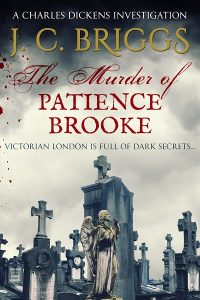
The first six books in the series have been published, and we are thrilled to announce that we have signed up the next two instalments.
In J C Briggs’ words:
“I am thrilled that Sapere Books are to publish two new cases featuring Charles Dickens and Superintendent Jones. Number seven in the series is THE HAWKE SAPPHIRES, which begins at Hawke Court, an almost derelict mansion where Sir Gerald Hawke is dying. His two wives and his only son are dead. His heir is a clergyman, Meredith Case, for whom Hawke has one last command. Hawke has commanded all his vicious life and expects to be obeyed. Meredith Case must ‘find Sapphire Hawke’, who vanished over twenty years ago.
“A chance meeting with Charles Dickens sends Case to the north of England. Meanwhile, Dickens and Superintendent Jones of Bow Street are investigating the death of a young man who was found on the steps of a bookshop.
“Charles Dickens begins to suspect that the two cases are connected. He and the young detective, Scrap, experience a frightening night at Hawke Court.
“Book eight in the series is THE CHINESE PUZZLE. On the first day of The Great Exhibition in May 1851, a Chinese man bowed before Queen Victoria. It was assumed that he was a representative of the Celestial Empire. He wasn’t. It was reported in the newspapers of the day.
“In THE CHINESE PUZZLE, behind the scenes the Home Secretary is furious at the breach of security. There have been attempts on the Queen’s life before.
“And also concerning for the government, a wealthy banker and former opium merchant of Canton vanishes on the first day of the Exhibition. The Prime Minister, Lord John Russell, appoints Superintendent Jones to carry out a most secret investigation. The case may involve high-powered bankers and politicians. Jones cannot afford to get it wrong. Only Charles Dickens can help him find his way about the houses of some very important people. There is danger from high and low when the case takes them to the East End opium trade and some very dangerous criminals.
“It really is great to work with Sapere Books again and to know that they have faith in my series. They are a wonderfully supportive publisher to all the writers in the Sapere family.”
Click here to order THE MURDER OF PATIENCE BROOKE
Click here to find out more about the Charles Dickens Investigations
Following the publication of Graham Brack’s darkly funny Josef Slonský Investigations – atmospheric police procedurals set in Prague – Sapere Books recently started publishing his Master Mercurius Mysteries: 17th century crime thrillers set in Leiden, The Netherlands. Taking centre stage is Mercurius – a witty university lecturer-cum-sleuth.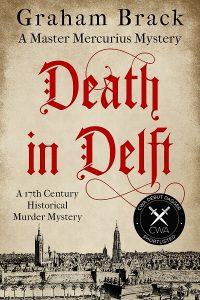
The first three books in the Master Mercurius series are published or available to pre-order, and we are delighted to have signed up the next instalment: THE NOOSE’S SHADOW. The fourth book sees Mercurius free from the demands of the Stadhouder – William I of Orange – for once as he is asked for help by a poor young woman whose husband faces execution for a murder he swears he did not commit. How can Mercurius refuse?
Graham says, “I was already part of the Sapere family after Amy signed me to write six Slonský novels, so I knew Sapere Books was the right place for my Dutch series too – and Slonský will be back! We’re a very supportive bunch of writers who enjoy each other’s successes, and the Sapere team is simply excellent. I couldn’t imagine going anywhere else with the Mercurius books.”
Amy says, “I have already worked with Graham on eight published books since we launched in March 2018, and I am thrilled to have signed his next book. I hope there will be many more! Fans of his previous series are already calling for a return of Slonský, and they seem equally smitten with Master Mercurius. I thoroughly enjoy reading Graham’s books and look forward to editing many more in the series.”
Click here to order DEATH IN DELFT
Click here to find out more about the Master Mercurius Mysteries
Chapter One
The taxi swung out of the avenue and I got my first view of Grovestock House, its blindingly white stucco frontage gleaming in the autumn sunlight. The drive curved gently round a neatly manicured lawn and our wheels crunched on the gravel as we pulled up outside the front door.
As I stood outside waiting for the doorbell to be answered, I wasn’t sure if there would be anything challenging in this case.
‘Just go through the motions,’ Dyer had said to me. ‘There needs to be the appearance of a complete investigation, but we already know what happened. And remember, it’s not me wanting another look at it, it’s the Chief Constable. He’s getting pressure from the press, who think we should have investigated the deaths more thoroughly. They’re suggesting the case wouldn’t have been tied up quite so quickly if the family wasn’t so well connected.’
Briefly, we went through the file together. I recognised the outlines of the case from the newspaper coverage. “Warwickshire House of Death” had screamed one headline, followed by every grim detail of the tragedy. Lady Isabelle Barleigh had killed her wheelchair-bound son with a shotgun before turning the gun on herself. This had been quickly followed by the suicide of the young man’s fiancée. What made the whole affair more chilling was that the couple were to have been married two days later. Instead, they were now sharing a graveyard. I’d felt ill reading the article but, on the face of it, the facts had looked clear. Nevertheless, I was hardly surprised when questions started to be asked about why the whole matter was despatched so quickly. The deaths had only occurred a few days earlier and, somehow, strings had been pulled to convene a quick inquest and then a funeral to replace the wedding celebrations.
Now I was wishing I’d argued more against being assigned to this one, especially as Dyer had taken me off the Jewish beatings investigation and passed it to that idiot Terry Gleeson. If what happened at Grovestock House was as clear-cut as the preliminary work suggested then why give it to me? I’d told him that there were plenty of other good coppers around who’d adequately tie up the loose ends. I think Dyer knew the Bishop and Stack case had given me a good deal of pain and he was trying to do me a favour. Or perhaps his instincts told him that the initial enquiry had been a bit cursory and, perhaps, unreliable.
Anyway, I hadn’t resisted much so I’d left, briefly calling in to my station in Kenilworth, then home to collect a few things, arriving at Grovestock House before lunch. On the way I’d re-read the file and acquainted myself with the facts as they’d been recorded so far. It was unfortunate that a few days had passed and allowed the trail to cool but it couldn’t be avoided in the circumstances.
The local constable, Sawyer, had been pretty thorough in his approach. He’d been telephoned about the deaths around midday, cycled over as soon as he could, arriving an hour later. By then, the body of the fiancée had been discovered; she had shot herself with the dead man’s revolver. First thing he did was make sure the gates were guarded. Nothing to be done for Tom Barleigh, his mother or girlfriend, so he set about photographing the scenes and interviewing witnesses, several of whom told Sawyer that Lady Isabelle had been increasingly set against the marriage, though none knew why. He’d written his notes up swiftly and gone through them with Gleeson, who hadn’t bothered to interview anyone himself. Just like him, idle bugger.
The local doctor decided there was no need for a post-mortem and Sawyer presented his evidence to the inquest, which made the same conclusions he had. It was starting to bother me that everything had been despatched so quickly, so neatly.
I had done my research on the family prior to my visit. Grovestock House had been built sometime in the middle of the eighteenth century when Thomas Barleigh had wanted a new home to reflect his recently acquired status as a Privy Councillor to King George III. He’d been appointed following his generous support to the monarch in a series of conflicts with France, particularly in the Americas. Thomas was no soldier though, he was one of the new breed of industrialists, building up a fortune manufacturing muskets and pistols. Items put to good use by George’s army in its attempts to suppress uprisings across the empire.
Thomas’s grandson, having become a regular drinking partner to the Prince Regent, was raised to a baronetcy when the prince ascended the throne in the early eighteen hundreds and the house had been refurbished and extended to celebrate. Shifts in political allegiance over the next two centuries meant Sir Arthur Barleigh, the present incumbent, no longer had the power and influence his ancestors enjoyed. Nevertheless, the family was still important in the social merry-go-round of the county, hence the newspapers’ interest and the Chief Constable’s newly-found desire to make sure the job was done thoroughly.
A man in his late forties swung open the door. He wore a dark jacket and pin-stripe trousers, and his hair was greying at the temples. He gave off the unmistakeable smell of brilliantine as he looked at me enquiringly over the rim of his glasses. He was beyond question a butler and I remembered from Sawyer’s report that his name was Jervis.
‘Inspector James Given, Warwickshire Constabulary. I believe you’ve been expecting me.’
‘We have, sir. Sir Arthur asked me to prepare a room for you so I’ll take you up if you’ll follow me.’
‘There’ll be no need, thank you, Mr Jervis, I won’t be staying here tonight. I’ve already booked a room in the village. However, you can look after my overnight bag for now if it’s not too much trouble.’
He took it and asked if there was anything else I needed. I told him I’d like to have a look at where the deaths took place.
‘Very good, sir, would you like me to accompany you?’
‘No thank you, that won’t be necessary, just show me where Lady Isabelle and her son died.’
He pointed to the left of the house. ‘The shootings took place down there, sir, on the side lawn.’
I let the butler go about his business, instructing him to tell everyone in the house I’d arrived and would be conducting interviews later in the day. I didn’t think for a moment I’d get through many but it would do no harm to put them under a little pressure.
Before heading to the side of the house I turned on the step and surveyed the grounds. It wasn’t a grand estate by any means and I suspected it had once been much grander. Perhaps a profligate ancestor had squandered too much of the family fortune on high living. It still remained a couple of hundred acres at least, judging by the distance from the gate to the main house. A lawn, directly in front of the main door, was circled by the drive and bordered by several dozen rose bushes, whose scent would have been breath-taking in the height of summer. At its centre stood a magnificent cedar, fully thirty feet across and towering well above the roof top. The whole garden was walled or hedged on the two sides, with openings to further gardens, woods or fields beyond. The entire landscape sloped down to a lake sculpted into the fields below.
When I turned again and stepped back, I was able to take in the full grandeur of the house. There were two enormous bays rising to the roof and there were roughly twenty windows, all in the Georgian style. Ruefully, I compared this with the single window on each floor of my own little cottage in Kenilworth. The gravel crunched beneath my feet as I walked to the side lawn and through the gate. High walls and hedges surrounded the area and it was obvious that whatever had taken place here wouldn’t have been seen from anywhere in front of the building. Not unless someone was close enough to the gate. I noted there was no other access, or exit, apart from a side door into the house. The side walls were of much plainer red-brick and of a much earlier period, the grand frontage being merely a façade. I wondered what else in this case might be not what it seemed on the surface.
‘Good afternoon, constable.’ I looked at my notes. ‘Sawyer, isn’t it?’
‘Yes sir, John Sawyer.’
‘I’ve had a chance to have a look at your report but there are a few things I need to go over with you, to get them clear. Well done with the photographs, by the way, a very thorough touch.’
‘Thank you, sir.’
He’d joined me at Grovestock a few minutes after my inspection of the front gardens. He was tall even for a copper, towering over me when I stood to shake his hand. His blond hair and fresh features, accompanied by the flushed cheeks when I praised his work, gave the impression of an overgrown schoolboy in a policeman’s uniform.
‘I had my Brownie with me, sir; I tend to put it in my saddlebag when I’m out in case I see anything interesting to photograph on the way. There’s not usually much use for it in my work round here, though. Lost cats, neighbour disputes, that kind of thing. I’m lucky enough to have a darkroom at home so was able to develop them myself as well.’
Sawyer’s boyish enthusiasm was naive, but clearly he was smart and not afraid of using his own initiative. I was certain it would have been the first murder he’d looked at so he’d done well to keep calm and record everything as fully as he had.
‘Why did you conclude Isabelle Barleigh had shot Tom and then herself?’
‘Well, it all looked very obvious on the day, sir. The two of them were lying on the ground with the weapon between them. He’d been shot in the chest from close range, toppling him out of his wheelchair, and she’d shot herself under the chin, really the only way she could have done it with a shotgun.’ Sawyer turned green as he remembered. ‘Also, people from the house and the estate were there in minutes, so it seemed unlikely that anyone could have carried out a murder then disappeared down the road without being noticed.’
‘Not likely, or not possible?’
He now hung his head slightly at the thought he might have missed something.
‘I suppose it might barely have been possible, sir, for someone who knew the place well enough.’
I asked him if there was anything else at the scene, anything at all which might suggest a different set of circumstances.
‘Nothing really, sir. The only slightly odd thing was that Lady Isabelle had a scrap of paper clutched in her left hand.’
‘Paper?’
‘It appeared to be a bit of a letter, judging by the partial address in one corner. It turned out to be that of Miss Bamford’s father, Gerald Bamford. I searched the garden thoroughly but didn’t find any more of it and presumed the scrap was all she had.’
‘And what about Jenny Bamford? You concluded she’d committed suicide as well. Did she leave a note?’
‘There was no note, at least none that I found. When I was let into Tom’s room by Jervis, Miss Bamford was lying on the bed with the revolver on the floor below her hand. It seems that the gun belonged to Tom Barleigh and everyone knew he kept it in a drawer in his bedroom. She had a single bullet hole to the side of her head and the pillow was covered with blood, so it was clear she’d died where she lay.’
He looked queasy again so I let him settle before continuing.
‘Did you interview everyone when you arrived?’
‘I took statements from everyone there. You’ll know from the file that Billy Sharp and Tom Barleigh’s nurse, Trudi Collinge, disappeared before I could interview them. I would have liked to speak to Jenny’s family as well, to see if she’d been unhappy and so on.’
‘But you didn’t manage it?’
‘No, it wasn’t possible. Parents are divorced, she’s in Australia and remarried. We sent a telegram to the local police so they could let her know her daughter was dead. Her father showed up briefly at the funeral but then left part way through before I could speak to him. I asked one of the other lads to call round to see him but apparently the house looks like it’s been empty for a few days.’
‘What about Sir Arthur? Did you get a full statement out of him?’
‘That wasn’t easy, sir, but I did get something. I was told by the butler that Sir Arthur had some urgent business which he needed to attend to and it would be really helpful if I could interview one or two of the others first. It made no real difference to me so I just got on with seeing everyone else that I could. When I’d finished, Jervis came to fetch me to go to Sir Arthur’s study. He seemed a bit surprised to see me still there but did agree to be interviewed. Apart from telling me where he was when each of the shootings happened he wasn’t able to add anything to what everyone else had said.’
‘Did he suggest any reason why his wife might have done such a thing?’
‘He said he was at a complete loss about it. To be honest, he seemed … overcome, if you understand me. Like he didn’t really know what was happening. I thought I’d best leave it alone until I was told to do otherwise by someone more senior. I did telephone next day in case he was feeling any better but was told he’d been given sedatives and was sleeping.’
‘Tell me about him. How is it that he’s “Sir” Arthur?’
‘He’s a baronet and inherited the title. It’s come down through about eight generations until he took it over when his father died at the end of the Great War. That was about the same time he married Lady Isabelle.’
‘“Lady” Isabelle? She was a proper toff then, was she?’
‘No, I don’t think so. I’d be fairly sure she picked up the title from him. I don’t know much about her but I’ve an idea she was just a local girl who got lucky.’ Sawyer then came up with a question he must have been dying to ask since we met. ‘Excuse me, Inspector, and I know it’s perhaps none of my business, but why has it taken so long for someone to follow up the case? I mean, I know Inspector Gleeson went through the file but he didn’t even come down to the house, just met me at the station. Said there was no need. But now you’ve turned up.’
‘You’re right, it would have been much better if I’d have been able to make it straight away but I wasn’t available. On the day I was still tied up with the Peter Bishop hanging.’
‘I read about that case. Didn’t they kick a Jewish butcher to death in Birmingham?’
‘They did. Bishop and Stack scarpered but I got lucky when they were heard bragging about it in a pub. They were both members of a Blackshirt gang, followers of that idiot Mosley, and had been planning the attack for weeks. Anyway, by the time it was over, you and Inspector Gleeson had finished the investigation.’
I told him Gleeson had forwarded the file to the Chief Constable with a recommendation for no further action.
‘If you hadn’t made such a convincing case for a murder and two suicides it might have been chased up sooner.’
‘I’m sorry, sir, it all seemed so clear cut.’
‘Don’t worry about it, you did a good job. I can think of half a dozen officers, with much more experience than you, who would have come to the same conclusion. It was only after the inquest, when the big boss started getting pressure from the newspapers, that he asked Superintendent Dyer to have another look.’
‘And you think there’s more to the case than meets the eye, sir?’
‘I don’t know, but it’s all a bit too neat and tidy for my liking. Let’s just sniff around a bit longer and see what turns up. If it’s nothing more than me being overly cautious, then you’ll gain more respect from your colleagues and I’ll have had a nice day or two in the Warwickshire countryside.’
Sawyer filled me in on the other interviews he’d carried out with the household staff and the gardeners. No-one had witnessed anything and all except the butler were able to account for where they were when the shootings happened. Sawyer had also spoken to a friend of Tom’s, Alan Haleson, who was staying at Grovestock House and would have been his best man at the forthcoming wedding. Haleson had reported his version of the events but was on his own when each of the shootings took place.
‘So what would you like me to do now, Inspector?’
‘It’s imperative we find the young gardener, Tom’s nurse, and Jenny Bamford’s father. And I’ve to get a full interview with Sir Arthur. You follow up the first three as best you can. I’m going to finish reading the file and then go back to the bereaved husband and a few of his staff. Let’s see how we get on and we’ll meet up again tomorrow.’
I found Jervis in his pantry, a small room between the kitchen and main part of the house. This was the nerve centre of his fiefdom. There was all the paraphernalia associated with ensuring the life of his master was well run and comfortable: the wine coolers, ice buckets, silver trays, cutlery boxes and so on. The room also contained a small table and two chairs; an old one seemingly from the kitchen, and a slightly more welcoming one placed in the corner. Jervis had an open ledger on the table when I popped my head round the door. A number of others were neatly stacked on the shelf above him.
‘You look busy, Mr Jervis.’
‘Not really, Inspector, just catching up on some paperwork.’ He smiled sorrowfully as he got up to beckon me inside. ‘Much less to do now with fewer people in the house. We were expecting this to be such a happy time. How can I help you?’
The man looked upset and seemed to be putting on a brave face for the sake of the other servants. He must have felt the tragedy as heavily as everyone else.
‘I need to see Sir Arthur. Could you go up and tell him I’m here and want to interview him?’
‘I’m afraid I can’t, sir, he’s not here.’
‘Not here? A moment ago you said he was in his room most of the time. I thought I asked you to tell everyone I’d like to see them today.’
‘I’m sorry, sir, I should have said when you arrived. He decided this morning he needed to get out of the house so left quite early for a ride.’
‘Does he often do this?’
‘Before all of this happened he’d go out several times a week and could be away for hours. On more than one occasion he’d travel as far as Banbury and back in the day; a good three hours’ journey in each direction. I believe he thought you wouldn’t be here until the evening. I couldn’t say when he’ll come home but I’ll let him know you want to see him if you’re still here. He’s said we need to give the police as much assistance as we can and I should put the house at your disposal if you need somewhere to stay or work.’
I was annoyed at Sir Arthur’s absence but all I could do was interview the butler and hope his employer would return soon. I thanked Jervis for the offer of a room to work in, took a seat and checked some of the details from the file with him.
‘So where were you at the time of the first shootings, Mr Jervis?’
‘It’s as I told the Constable, sir. I’d just entered the lift upstairs and pressed the button to come down. I wouldn’t normally use it, of course; the servants aren’t really allowed. We’re supposed to use the side stairs, but I was bringing down a large basket of bed linen that needed to be aired for the guests due to arrive.’
‘Surely that isn’t your job?’
‘It’s usually one of the maid’s jobs to fetch the linen but there was so much it needed someone stronger. I thought the first bang was something to do with the lift machinery starting up. Then, when I’d travelled a few more feet, I heard the second bang and was certain it was a gunshot fairly close by, much closer to the house than would be usual. I got out as soon as the lift arrived on the ground floor then saw Miss Parry at the bottom of the stairs, about to run out of the front door.’
There was a silence.
‘And who is Miss Parry?’
I think I knew the answer before he gave it. It would be too much of a coincidence for it not to be her.
‘Miss Elizabeth Parry is the housekeeper, Inspector.’
I hadn’t expected to hear her name ever again. It made my stomach churn and my head spin.
‘So what did you do?’
‘I knew something must be wrong so I joined her. Mr Haleson, Mr Barleigh’s friend, also appeared at that point and came with us. I wasn’t sure which direction to go but she said it was on the side lawn so we went that way. I shouted for her to stay behind me in case there was still any danger.’
‘That was very brave of you, Mr Jervis.’
‘I don’t know about brave, sir; I was doing my duty.’
I went on to question him about what he’d seen when he arrived at the side lawn and he repeated what he’d told Sawyer. He also confirmed he’d gone inside to find Sir Arthur straight after the bodies were discovered. He had asked Elizabeth Parry to tell the rest of the staff what had happened.
‘You let Miss Bamford into the house when she returned?’
‘I did.’
‘And you told her what had happened?’
‘Oh no, Inspector. I was under strict instructions from Sir Arthur not to say anything, that I should simply inform her he wanted to see her upstairs in his room.’
Jenny left him in the hallway and climbed the main stairs to the upper landing. Shortly afterwards he was making his way to the kitchen to join the other staff when he heard a shot from upstairs. He ran back through the house and up the central staircase then searched from room to room to try to find where the shot had been fired. He arrived at Tom Barleigh’s room last of all and saw Sir Arthur and Alan Haleson standing over Jenny Bamford. A revolver was on the floor beside the bed.
His voice caught in his throat when he recalled seeing the dead young woman, though his face gave nothing away. I couldn’t help wondering if he was perhaps fonder of her than of the others. There was nothing else he could tell me so I asked him to contact me straight away if he thought of anything important he’d missed. I didn’t really expect he would. Jervis had a butler’s loyalty so family secrets would remain secret.
Sir Arthur still hadn’t returned when I’d finished with the butler. I decided to move on to the maid who had witnessed the first two deaths on the side lawn. I asked for her to be sent to the room which had now been put at my disposal, the “morning room”. I’d spent several years at sea, often with four to a cabin, and it amused me to think the aristocracy have special rooms they only utilise at particular times of the day. I even think my own little cottage is spacious, having the luxury of an extra bedroom for me to use as an office.
Marion Clark stood before me, looking nervous, and confirmed she was upper housemaid to Sir Arthur and Lady Isabelle Barleigh. She’d been in their employment for about two years. There was something about the girl’s face that hinted at a touch of stupidity and though she was twenty years old or thereabouts, she looked much younger.
‘You were interviewed by Constable Sawyer on Tuesday, weren’t you, Marion?’
‘Yes sir, I was, sir.’
‘Well, I’m a detective and an Inspector, so much more senior than he is and there can be no lies from you. Do you understand me, Marion?’
If the girl had been nervous before, she now looked like she’d faint away any moment, her eyes darting this way and that, and her hands wringing her apron front.
‘I understand, sir. I wouldn’t lie.’
I told her to take a seat.
‘You’ve known the family for a good while now, so what do you make of them?’
She appeared to struggle for words.
‘They’ve always treated me well, sir.’
‘I wasn’t asking how they treat you, Marion. Were Sir Arthur and Lady Isabelle a happy couple?’
‘That wouldn’t be for me to say, Inspector Given, I’m not one for telling tales.’
‘But that’s exactly what I want you to do, Marion. In fact, I’m actually expecting you to tell tales. We have three deaths here and I dearly want to get to the truth of what happened. But we’ll perhaps come back to what you think of the family a little later. For now you can tell me what you saw on Tuesday.’
‘Tuesday? Well, sir, Tuesday is my day for cleaning Mr Tom’s room. His nurse, Miss Collinge, sees to it most days but once or twice a week the other staff take a turn and on Tuesday it’s me. I start with the beds, then brush the carpet and finish up by tidying his desk.’
For some reason this turned on the waterworks and we had to pause for a minute or two.
‘I’m sorry sir, it’s just the thought of it… Mr Tom is — was — very fussy, you know and didn’t want us messing about with his papers, only to put them neatly into piles where he left them. I was at the desk, and I could see out of the window and across the side lawn. It was such a lovely day I couldn’t stop myself from looking out for a few minutes. I wasn’t slacking sir, honest I wasn’t. If only it had been raining then none of this might have come about. Mr Tom wouldn’t have been outside and his mother wouldn’t…’ She sniffled and I was certain she’d open the sluice gates again.
‘Hold on, Marion, let’s stay with what you saw out of the window.’
There was more sniffling and a blow of her nose before we could resume.
‘As I said, sir, I was by the desk, and looking out of the window at Mr Barleigh out on the lawn. He sat in his wheelchair reading most days when the weather was good enough. Always very fond of his books he was, sir, even before his accident.’
‘You were here before that happened?’
‘Oh yes, sir, though I hadn’t been here long then, a great shock to us all it was, especially to Lady Isabelle. She seemed to worry about him all the time after he came back from the hospital.’ The maid looked like she was going to tell me more but caught herself and returned to my earlier question. ‘Sorry, sir, I was telling you what I saw. Suddenly the blackbirds pecking for worms took off and Lady Isabelle came into view, from the front gate I think, though I couldn’t be sure. I straight away thought something must be wrong, ’cos her ladyship seemed to be shouting and waving her hand about like she’s half mad.’
‘What about the other hand?’
‘The other hand? Well, I think she must have had the shotgun under her arm because she was holding something close to her side.’
‘Did you see the shotgun, Marion?’
‘No, I didn’t. But that’s what it must have been, mustn’t it, otherwise where would she have got it from?’
‘That is something quite else. You remember what I said, and tell me what you actually saw, no more and no less. Understand? So what happened next?’
‘Mr Tom looked up at her — I didn’t see no more, sir, because Miss Parry, the housekeeper, had been watching me from inside the doorway and shouted for me to get on with my work.’
‘So you didn’t see the actual shooting take place?’
‘No sir, can’t say as I did. I heard the shotgun go off right outside, and Miss Parry and I both looked at each other but before we can do or say anything, there’s a second shot. We were then so terrified, sir, honest sir. Miss Parry tells me to go back up to my room, quick as I can, and she heads off down the stairs to look for Mr Jervis. I…’ She stopped, blushing.
‘What is it, Marion? Remember, this is a police matter, we need the complete truth.’
‘Yes, sir, Mr … Inspector. Well … truth is I didn’t go straight back upstairs. I crept back across the bedroom and peeked out of the window. It was only for a second, ’cos I couldn’t face it no longer, but what I saw was the two of them, Mr Tom and his mother, lying on the ground with the shotgun beside Lady Isabelle.’ She stared sightlessly ahead, remembering. ‘There was just the wheels of his chair going round and round…’
‘Did you see anyone else there, Marion?’
‘No, sir. All I could do was stare at those bodies. The blood and the stillness all around. There was no-one else there that I saw.’
The maid seemed transfixed by the memory and I had to prompt her to continue.
‘It’s all I know really, sir. I ran up to my room and stayed there until Miss Parry called all the staff together to tell them what had happened.’ Suddenly she looked at me, her eyes focusing. ‘Why’d she do it, sir? They were so close, the two of them.’
‘Well, that’s what I’m here to find out. Where were you when the third shooting occurred, that of Miss Bamford?’
‘Just where I said, sir. Miss Parry had called all the servants together in the kitchen to tell them what had happened. She was shaking like a leaf and said there’d been a terrible accident. A minute after she told us Mr Jervis had phoned the police there was another shot, from upstairs.’
‘Who was in the kitchen at the time, Marion?’
‘Well, sir, apart from me and Miss Parry, there was Mrs Veasey, she’s the cook, Peggy Shaw, the other maid, and Mr Perkins, the head gardener.’
‘So there were five of you, is that correct?’
Clark slowly counted the names in her head and on her fingers to confirm the number. ‘Yes, sir, that’s it.’
‘Mr Jervis and Nurse Collinge weren’t there with you?’
‘No, sir, they weren’t. Mr Jervis had been waiting for Miss Bamford to come back and someone said Nurse Collinge was too upset to come down. She was very fond of Mr Barleigh, you know.’
‘Had you seen Jenny Bamford arrive back at the house?’
‘I hadn’t, sir. As I told you, I went to my room like Miss Parry had told me and stayed there until she called for us to the kitchen. I don’t know when Miss Bamford came back, sir.’
I spent another few minutes clarifying some of the points she’d made and I underlined a couple of items in my notebook, then told her she could go. There was still something niggling me about what she’d seen that didn’t seem right.
Intrigued? Get A Shadowed Livery now and keep reading!
Following the publication of Deborah Swift’s extraordinary wartime sagas – PAST ENCOUNTERS and THE OCCUPATION – editorial director Amy Durant has signed four more of her books.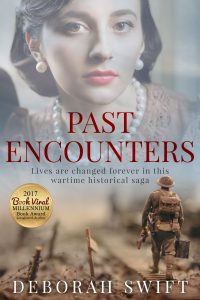
In Deborah’s words:
“I’m really thrilled to have signed with Sapere Books for my third WW2 novel, THE LIFELINE, in which a teacher flees Nazi-occupied Norway and escapes to Scotland on a small fishing boat, in an operation known as The Shetland Bus.
“Not only that, but I’ve signed with Sapere for three more historical novels set further back in time. The first, THE POISON KEEPER tells the story of Giulia Tofana, the woman who, according to legend, poisoned six hundred men in 17th Century Italy. The deadly poison Aqua Tofana bears her name. Italy in the 17th Century is a fascinating brew of baroque religion, art and culture, and the legacy of the ‘Camorra,’ the 17th Century Mafia. THE POISON KEEPER is set in Naples under the smoking shadow of Mount Vesuvius. There will be two further books in the Italian series; the other two books will be set in Venice and Rome.
“I was delighted to be offered a home for four new books (four books!) with Sapere, as not only do they offer very good royalty rates to authors, but they have a really strong, supportive author community.”
Amy commented: “Deborah is a wonderful storyteller, and I am extremely happy she has chosen to continue partnering with Sapere Books for her next four novels. Fans of her first two Second World War novels won’t have to wait much longer for her third wartime-era book; THE LIFELINE will be available to preorder soon.”
Click here to order PAST ENCOUNTERS
Click here to order THE OCCUPATION
Sign up to Deborah’s newsletter to stay up to date with her book news and latest releases.
Stephen Taylor is the author of A CANOPY OF STARS, a thrilling historical 19th century saga stretching from the legal courts of Georgian London to the Jewish ghetto in Frankfurt.
Hi Stephen! Welcome to the Sapere Books blog. Could you tell us a bit about what first got you into writing?
My addiction has been with me for over twenty years now. When I was younger, if somebody told me a good joke, when I retold it it was twice as long, embellished, the story enhanced, the characters fleshed out. With me, it was never just about and Englishmen, an Irishman, and a Scotsman. It was an Englishman in a bowler hat with a monocle, an Irishman in a donkey jacket with a pint of Guinness and a Scotsman in a kilt with a set of bagpipes (and yes I know that this is stereotypical).
Tell us about where you write and your writing habits.
I started by writing during my lunchtime at work, but now I write in my home office. I keep a working week, Monday to Friday and write for two and a half hours a day. I seem to need that discipline.
What part of the writing process do you find most difficult?
Probably research: it’s a double edged sword — part good, part tiresome. The rewrites are also tricky, as you can edit forever, endlessly trying to improve what you have written. I aim to stop after five rewrites.
Do your characters ever seem to control their own storyline?
The received wisdom is that you determine your storyline and not let your characters deviate from that. However, after I develop my characters, they tell me where they want to go, what they want to do. I follow them, and my stories are character led. I still have a structure in my mind — A to B, but the characters say how I get there.
Do you find it hard to know when to end a story?
Not usually. I have a prompt to myself that sits just below the line I am typing. It reminds me to keep some control over the characters. It says: INTRIGUE — CONFLICT — CLIMAX — RESOLUTION. i.e:
Open with a big question or hook: INTRIGUE. Then you have the problems your hero is up against: CONFLICT. This builds to a CLIMAX. This is followed by the RESOLUTION.
What is your favourite book?
If you ask me this next week, you may get a different answer. I would say my favourite book is To Kill a Mockingbird by Harper Lee. My favourite character is Uriah Heep, from David Copperfield. Dickens’ image of him is wonderfully unpleasant — he’s so slimy.
What book do you wish you had written?
Anything by Norman Mailer. As a writer, he is so far above me. He’s much more than a storyteller.
Tell us something surprising about you.
I was brought up in Manchester, but I was born in Yorkshire. My mother traveled back to Yorkshire so that my birth there would give me residential status to play cricket for Yorkshire — nobody ever believes that, but I promise that it’s true. Unfortunately, it was a feat that I never achieved, the White Rose County being unappreciative of my cricketing skills.
Preorder A CANOPY OF STARS here!
Sign up to our newsletter for deals and new releases.
We recently had a digital meet-up with some of our authors to catch up on current projects and find out how lockdown has impacted their writing. Read on to find out more about their creative news and practices: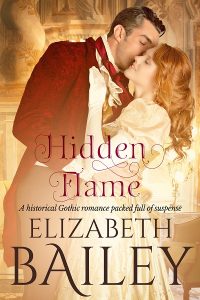
Elizabeth Bailey has published six Lady Fan Mysteries, four Brides By Chance Regency Adventures, and two more historical romances. She is working on her seventh Lady Fan book. Elizabeth has also been taking daily walks, giving digital readings, and maintaining her weekly newsletter, which is filled with writing updates and giveaways.
Graham Brack has published six Josef Slonský Investigations and two Master Mercurius Mysteries. He is working on the next books in both series. Graham finds that working on two series simultaneously helps prevent him developing writers’ block with either one.
Jane Cable has published one contemporary romantic saga drawing on World War II, and her second – Endless Skies – is forthcoming. Jane has been developing a new website, editing Endless Skies, and working on a new contemporary romance novel.
Tim Chant has a Russian-Japanese naval novel forthcoming and has started the next one. He is also writing and self-publishing science-fiction and steampunk novellas.
 Michael Fowler has published five DS Hunter Kerr Investigations. He is currently working on a new series, developing a character who is a forensic psychologist. As part of this, Michael is researching various forensic technologies and has spoken to an expert in the field.
Michael Fowler has published five DS Hunter Kerr Investigations. He is currently working on a new series, developing a character who is a forensic psychologist. As part of this, Michael is researching various forensic technologies and has spoken to an expert in the field.
Justin Fox has two nautical novels forthcoming with Sapere Books. These are also being published in South Africa by Penguin Random House and are currently being edited.
Anthony Galvin (who also writes as Dean Carson) is the author of historical non-fiction book Death and Destruction on the Thames in London. He is working on a series of thrillers. As a mature student, Anthony has also been finishing up assignments and exams.
Sean Gibbons’ gritty crime series – following taxi driver Ben Miller – will be published in 2021. He is currently writing the fourth book in the series and has just finished a World War II espionage thriller.
Gillian Jackson has published three psychological thrillers. She is now editing old and self-published work, finding ways to re-purpose old characters. Gillian is particularly interested in developing more contemporary women’s fiction with a psychological element.
Natalie Kleinman has four Regency romances signed up and has written two more. She has recently made a start on a new romantic novel.
Simon Michael has published five Charles Holborne Legal Thrillers, and he has a sixth one lined up. Aside from writing, he has recently been busy with building work.
Ros Rendle has six romance novels forthcoming with Sapere Books, including her Strong Sisters trilogy. Ros has recently finished a new novel, and she has found her Chapter writing group (regional groups of romance writers affiliated with the Romantic Novelists Association) a great source of support.
Linda Stratmann has published five Mina Scarletti Mysteries and is writing the sixth. To help with this, she has been researching Victorian spirit photography using Archive.org. Linda has also been gardening, cooking, baking, and holding digital meetings with the Crime Writers’ Association, of which she is the chair.
Deborah Swift has published two romantic World War II sagas and is working on the third, which will be set in Shetland and Norway. She has been researching nautical terminology and walking a lot, which she finds is a great time to think about plot.
Alexandra Walsh has published three timeshift conspiracy thrillers; the last one, The Arbella Stuart Conspiracy, came out in May. She is now writing a Victorian dual-timeline novel and is planning to start a newsletter.

We are thrilled to announce that we have recently welcomed three brilliant new authors to our contemporary romance and historical fiction lists. We look forward to sharing their wonderful work with the world!
Tim Chant is working on an exciting historical naval thriller series. The first instalment – THE STRAITS OF TSUSHIMA – is set in 1905 during the Russo-Japanese war and follows the daring exploits of Marcus Baxter, a British Royal Navy officer turned spy.
THE STRAITS OF TSUSHIMA is due out in 2021.
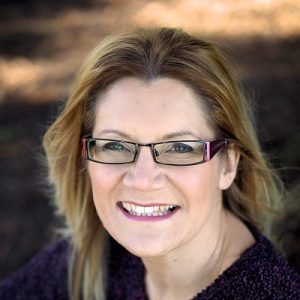
Teresa F Morgan is working on a fabulous three-book contemporary romance series. Set in Cornwall, her novels have a strong sense of place and a unique sunny charm. Her first book, COCKTAILS AT KITTIWAKE COVE, sees ambitious restauranteur Rhianna Price arrive in the area looking for a fresh start. But when she runs into her holiday fling, Rhianna’s focus is put to the test…
COCKTAILS AT KITTIWAKE COVE is due out in 2021.
Tanya Jean Russell writes heart-warming romantic fiction. Her first book will be a seasonal novel called AN IMPERFECT 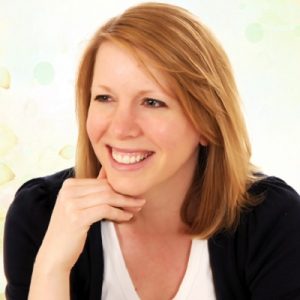 CHRISTMAS, a moving and uplifting tale that follows Maggie Green, a young accountant who returns to her hometown and is forced to face her first love.
CHRISTMAS, a moving and uplifting tale that follows Maggie Green, a young accountant who returns to her hometown and is forced to face her first love.
AN IMPERFECT CHRISTMAS will be published in late 2020.
Jane Cable is the author of ANOTHER YOU and ENDLESS SKIES, modern romantic sagas that draw on the Second World War.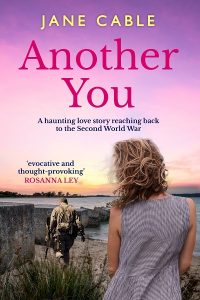
Although I hated history at school, in my adult life I have become a total history buff. Not history about royalty, wars and politicians though – the history of ordinary, everyday people. A history I feel connected to and is more often than not local.
For my contemporary romances the history I choose is sharply focussed, linked to the setting. For Another You, the most gripping part of Studland’s past was its role in the practices for D-Day, and for Endless Skies I decided to stay with World War Two. The book is set in Lincolnshire, so to my mind is inextricably linked with Bomber Command.
The wartime setting for Endless Skies is RAF Hemswell, now an industrial estate best known for its antiques centres and markets. In fact, that was the reason I went there in the first place. But wandering around the old barrack buildings, I could almost see the airmen on the stairs and hear the stamp of their boots in the parade ground. This had to be the place.
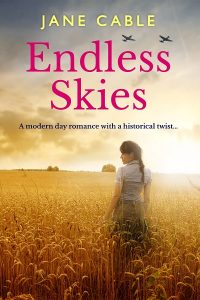 The staff at Hemswell Antique Centres were able to give me a leaflet with a short history of the base, and that set me off on my research. While we were in Lincolnshire I walked its buildings and roads then drove around the area, so I was totally familiar with the terrain, and once we were back at home I started to dig deeper.
The staff at Hemswell Antique Centres were able to give me a leaflet with a short history of the base, and that set me off on my research. While we were in Lincolnshire I walked its buildings and roads then drove around the area, so I was totally familiar with the terrain, and once we were back at home I started to dig deeper.
Here the internet is invaluable, and there are a number of websites giving the history of RAF bases. Hemswell was one of the first to be operational right at the beginning of the war, but as I dug deeper I found two Polish squadrons had been based there in 1942-3 and had suffered huge losses. I knew exactly where to focus my research.
This is where local history becomes exceptionally localised for me: one place at one point in time. In Endless Skies my protagonist, Dr Rachel Ward, is an archaeologist and my own work made me think of hers: researching a site, carrying out a survey, opening a trench, trowelling into every corner then digging out a single artefact. She finds … well, it would be spoiling the story to tell you. I find words.
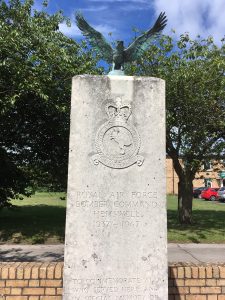
Hemswell War Memorial
But sometimes before you focus down you need to pan out, so I read around the subject: first-hand accounts from wartime bomber crews; memoirs of civilian life on RAF bases. For background on Hemswell itself I was very lucky – it was where The Dam Busters was filmed in the 1950s, and there was both a book and documentary about making the movie so I could watch almost contemporary footage.
There was also a treasure trove on the internet about the Polish airmen who crewed the station, and seeing photographs of them was quite an eerie experience. In fact, I ended up with far more information than I could possibly – or would want to – use in the book. But the level of detail gives me confidence my historical details are correct.
But equally interesting to me were the ghost stories associated with Hemswell: a pilot in flames on the runway, the echoes of 1940s music and the sounds of bombers taking off and landing. And having researched them, it would have been such a shame not to use at least one of them as well. Although my ghosts, of course, are completely fictional.
Click here to order ANOTHER YOU.
Click here to pre-order ENDLESS SKIES.
Keith Moray is the author of the SANDAL CASTLE MEDIEVAL THRILLERS, historical murder mysteries set in Yorkshire. The first two books in the series, THE PARDONER’S CRIME and THE FOOL’S FOLLY, are available to pre-order.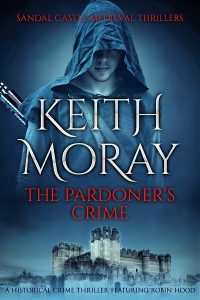
I live within arrowshot of the ruins of Sandal Castle. As a family doctor in Yorkshire, for thirty years I saw it most days while driving around the area on my morning visits. Nowadays, in semi-retirement I go running around the old battlefield where thousands of knights and soldiers once fought and died during the Wars of the Roses.
I plot and daydream when I run. Happily, a short story entitled The Villain’s Tale about a miscreant in a rat-infested dungeon in Sandal Castle won a Fish Award. It spurred me on to start plotting the Sandal Castle Medieval Thrillers.
Sandal Castle
The fine old motte and bailey was built in the 12th century by the De Warenne family during the reign of Henry I. From the 14th century it passed into royal ownership and is best known for its involvement in the Battle of Wakefield in 1460, when Richard, Duke of York was mortally wounded. His son, King Edward IV established it as one of the two bases for the Council of the North in 1472. Effectively, this was the government for the North of England. After he died, his younger brother, King Richard III began rebuilding the castle in 1483. The work stopped when he lost his life at Bosworth Field in 1485.
Thanks to television and movies, most people associate the outlaw Robin Hood with Sherwood Forest and Nottingham. However, the medieval ballads say that his stomping ground was actually Barnsdale Forest, which once covered a vast swathe of Yorkshire. The ballads also mention King Edward and various Yorkshire characters, such as George-a-Green the Pinder of Wakefield, and many actual locations in Wakefield are referred to.
The Court Rolls of the Manor of Wakefield
In medieval times, The Manor of Wakefield was the largest in Yorkshire and one of the largest in England, covering some 150 square miles. The Court Rolls of the Manor of Wakefield are a national treasure, consisting of a continuous recording of court proceedings from the late thirteenth century until the 1920s.
The outlaw and bowman Robert Hode, a sure candidate for being the historical Robin Hood, is mentioned in the Court Rolls of 1316.
The Sandal Castle Medieval Thrillers
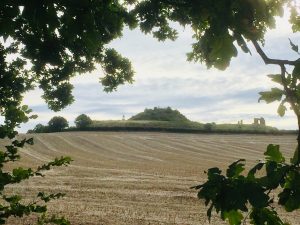 If you look at the picture of Sandal Castle today you will see exactly where I had the germ of the idea for The Pardoner’s Crime, the first novel in this series. It is a view of the castle from under what I fancifully call Robin Hood’s tree. I blended historical facts, medieval ballads and a good deal of imagination to come up with a historical whodunit.
If you look at the picture of Sandal Castle today you will see exactly where I had the germ of the idea for The Pardoner’s Crime, the first novel in this series. It is a view of the castle from under what I fancifully call Robin Hood’s tree. I blended historical facts, medieval ballads and a good deal of imagination to come up with a historical whodunit.
There are three completed novels and a fourth in the pipeline. They are not all about the same characters; indeed they are set at different times, because Sandal Castle with its fascinating history is the historical backdrop to them. They are all inspired by Chaucer’s The Canterbury Tales and some of the characters that he described so beautifully. The Pardoner’s Crime fuses The Canterbury Tales with the Robin Hood legends. The reader is challenged to uncover the true villain in each novel.
Click here to pre-order THE PARDONER’S CRIME.
Click here to pre-order THE FOOL’S FOLLY.
Sandal Castle image credit: Keith Moray
David Field is the author of the Carlyle & West Victorian Mysteries.
As a historical novelist in search of bygone eras to recreate, I’ve always been fascinated by the late Victorian period. It was a time of contrasts, with vast scientific, medical and technological breakthroughs coming at a time when ordinary folk were obsessed with communicating with the dead. Victoria seemed destined to rule forever over a rich empire, while her subjects in its industrial cities, and most notably in its London capital, were existing in conditions of abject poverty.
Following the success of my Esther & Jack Enright mystery series, which began with the search for Jack the Ripper and ended just as the nineteenth century was about to, I was urged to return to this rich seam of inspiration, and there was – for me, at least – one obvious place to start.
When Arthur Conan Doyle abandoned medical practice and created his fascinating character Sherlock Holmes, he was inspired by his memory of a real life Sherlock. His name was Dr Joseph Bell, and he had taught anatomy to his classes of medical students at Edinburgh University, one of whom had been Doyle himself. Bell had what was then a unique approach to his analysis of the cadavers that were to be found on his mortuary slab, something that is second nature to modern forensic examiners, but was revolutionary in its day. He approached ‘cause of death’ by examining, not just insides of the bodies, but the clothing and personal possessions with which they arrived, and telltale indications on the skin, such as needle marks, abrasions, rough working hands and suchlike. From this he made logical deductions that were of value to police in unexplained death enquiries, and he taught his students to apply the same techniques when they went out into the world.
There must have been several generations of medical graduates from Edinburgh who were taught ‘the Bell method’, and it was no great stretch of the imagination for me to create Dr James Carlyle, anatomist and general surgeon at Whitechapel’s London Hospital – a medical doctor with the same professional training as Conan Doyle and the same inquisitive, logical mind as Joseph Bell.
His first challenge – described in the first novel in my new series, INTERVIEWING THE DEAD – is to debunk the panicked belief among the populace of the East End that the spirits of those buried in a Plague Pit in Aldgate have returned to take their revenge for the disturbance of their resting place. That belief has taken hold easily, given the obsession with Spiritualism that gripped the country during this period.
But there were also other ‘spirits’ abroad, and they were advocating for great social change. Chief among these were the Suffragists, who campaigned for ‘votes for women’ and Suffragettes who took on entire police forces in public demonstrations. There were also other groups of feminists, as we would call them today, who advocated for equality of admission to professions such as medicine and the law. This was how Dr James Carlyle’s daughter, Adelaide, was created, as a young woman whose opinion of men and their dominance of society could not have been any lower – until she meets my third new character, Matthew West.
Although the Anglican Church was ahead of all other Protestant movements in the 1890s, it was demonstrating a social elitism that drove away ordinary working folk, and left the pastoral door open for more working-class religious initiatives and crusades among the poor. ‘Methodism’ had become a religious movement of its own, with its own hierarchy, but its progenitor, ‘Wesleyism’, still had its head above the parapet, and Wesleyan street preachers such as Matthew West might be found on corners, in market places, and outside factory and dockside gates.
Matthew has his own reasons for wishing to hose down any belief in the return of vengeful spirits of the dead, and when he finds himself associated with Dr Carlyle in the search for the truth, he comes up against the fiery Adelaide, who works as her father’s assistant. They influence each other’s views on life as they are drawn imperceptibly into a mutual attraction.
The stage is set for my next series. I hope you’ll join me in following the exploits of this unlikely trio, and I look forward to learning your reaction to them.
Click here to pre-order INTERVIEWING THE DEAD!
Sapere Books has reached its second birthday!
We now have a family of over 50 authors and plenty of chart successes under our belt.
To celebrate our first two years as a company, we threw a party in London and caught up with our fabulous authors over drinks and nibbles. All have exciting new projects brewing. Here is a taster of what to expect from our authors in 2020.
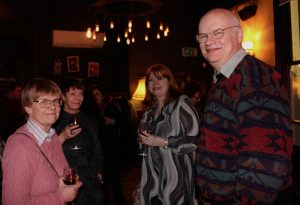
Alexandra Walsh and Graham Brack
Graham Brack is working on a historical fiction series, the Master Mercurius Mysteries, set in the 17th century. The first book, Death in Delft is already available to pre-order, and more will follow later this year.
Keith Moray has written the Sandal Castle Medieval Thriller series, historical murder mysteries set in Yorkshire. The first book, The Pardoner’s Crime, is available to pre-order, and more are soon to follow.
Alis Hawkins’ brand-new Medieval novel The Black and The White will be published later this month.
David Field is working on a brand-new Victorian mystery series, the Carlyle & West Mysteries, which will launch very soon.
Jane Cable has another thought-provoking romance with echoes of the past launching soon.
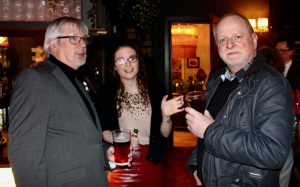
Stephen Taylor, Caoimhe O’Brien, and Keith Moray
Gillian Jackson has written a new psychological thriller, which will be released this summer.
Natalie Kleinman will be joining our excellent Regency Romance authors with her sparkling new books, which will feature strong and resourceful heroines.
Ros Rendle will be launching her Strong Sisters series this year – sweeping sagas that will explore family relationships and rivalries.
Seán Gibbons’ gritty urban crime series set in Galway will launch later this year.
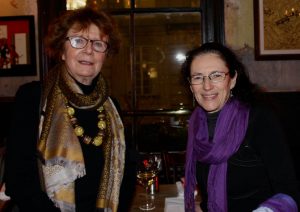
J. C. Briggs and Linda Stratmann
Stephen Taylor has a series of 18th century novels coming out soon.
And there are new books coming out soon from fan-favourite series, such as Alexandra Walsh’s Marquess House Trilogy, Elizabeth Bailey’s Lady Fan series, J C Briggs’ Charles Dickens Investigations series, Gaynor Torrance’s DI Jemima Huxley series, Charlie Garratt’s Inspector Given series, Michael Fowler’s DS Hunter Kerr series, Valerie Holmes’ Yorkshire Saga series, Marilyn Todd’s Julia McAllister series, Simon Michael’s Charles Holborne series, John Matthews’ Jameson & Argenti series and Linda Stratmann’s Mina Scarletti series.
For more information on our latest releases and ebook deals sign up to the Sapere Books newsletter.
To celebrate International Women’s Day (8th March) we asked five of our authors to tell us all about their favourite female writers. Read on to find out more about their literary heroines!
Alis Hawkins, author of The Black and the White and Testament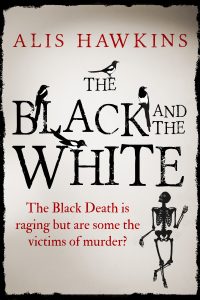
My all-time favourite author is Joanna Trollope. An odd choice for a crime author? Not at all. Wonderful writing transcends genre, and she inspires me by drawing characters with a fine eye to dialogue and interaction; by bringing whole scenes to life with a few telling details; by making her readers care passionately about what happens to her characters.
Joanna Trollope has shown me how essential it is to do your research meticulously, to immerse your readers in the world you’re writing about – whether it’s a cathedral close or a dairy farm, a ceramics factory or a Spanish vineyard – but never to include a single unnecessary fact that might slow the action down.
Each Joanna Trollope novel begins with a single key event that turns the lives of all her interrelated characters upside down – and what else does a murder at the beginning of a book do but that?
Order THE BLACK AND THE WHITE here
M. J. Logue, author of the Thomazine and Major Russell Thrillers
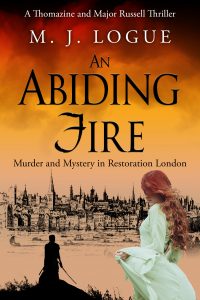 My busy little mind raced over all the possibilities – Tanith Lee, Storm Constantine, Dorothy Dunnett, Helen Hollick … but there can be only one, for me. Aphra Behn, of course. It’s not the what or the how of her writing, but the enigma and the old-school glamour of the writing persona she created – the international woman of mystery, the myths with which she surrounded herself – that inspires me. (Three hundred and fifty years later, she’s still a mystery!)
My busy little mind raced over all the possibilities – Tanith Lee, Storm Constantine, Dorothy Dunnett, Helen Hollick … but there can be only one, for me. Aphra Behn, of course. It’s not the what or the how of her writing, but the enigma and the old-school glamour of the writing persona she created – the international woman of mystery, the myths with which she surrounded herself – that inspires me. (Three hundred and fifty years later, she’s still a mystery!)
She was the first female literary professional, she did all her own publicity, and she’s still incredible. Possibly a spy, possibly bisexual – both, I suspect, images she manipulated to the hilt – and definitely a woman who knew how to work an audience. The fact that her plays and poems still resonate with us now is remarkable. She created characters that speak to us, no matter what clothes they’re wearing.
Or find out more about the Thomazine and Major Russell Thrillers here
Deborah Swift, author of Past Encounters and The Occupation
The first Rosie Tremain novel I read was Music and Silence, set in the Danish court in the early 17th Century. Marvellously atmospheric, it shifts between different narrative styles: small vignettes that add up to a magnified version of life in Copenhagen that is so real, you feel you are there.
I’ve read all her other books since, including the more contemporary The Road Home, about an economic migrant arriving in the UK, who observes with bafflement the English obsession with status and success. I admire Tremain’s precision, and that is something I want to achieve in my own writing.
Gaynor Torrance, author of the DI Jemima Huxley Thrillers
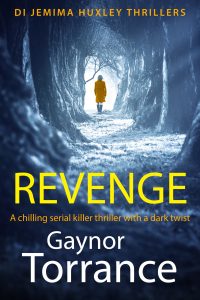 I write in the genre I love to read, and being an avid reader of crime fiction, there are so many female authors whose work I admire. A particular favourite of mine is Sophie Hannah. I first stumbled across her books by chance, when I borrowed a copy of Little Face from my local library. Once I started reading, I couldn’t put it down.
I write in the genre I love to read, and being an avid reader of crime fiction, there are so many female authors whose work I admire. A particular favourite of mine is Sophie Hannah. I first stumbled across her books by chance, when I borrowed a copy of Little Face from my local library. Once I started reading, I couldn’t put it down.
Since finishing that particular book, I’ve worked my way through much of the Culver Valley Crime series. I adore the originality and complexity of Sophie’s plots, which have lashings of intrigue and misdirection. The central characters, DS Charlie Zailer and DC Simon Waterhouse, are such a great pairing. They’re both so dysfunctional and vulnerable in many ways, yet somehow form a compelling and likeable team.
Or find out more about the DI Jemima Huxley Thrillers here
Alexandra Walsh, author of The Marquess House Trilogy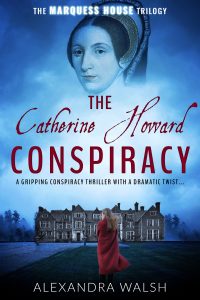
She may be old-fashioned, and her comments can make me wince, but take away the occasionally dubious contents of a bygone era and Enid Blyton remains a huge inspiration with the breadth of her storytelling skill. In her adventure books, her plotting is deft and sharp, while in her fantasy books her imagination is broad and tantalising.
As a child, she shaped my reading habits but my eureka moment came when I was reading In the Fifth at Malory Towers. I was already harbouring ambitions to be a writer, but it was only a dream. Then, the heroine of the series, Darrell Rivers, wrote the school pantomime. Suddenly, I thought, If Darrell can do it, then so can I! My life path was set. From reading Enid Blyton’s work, I learned that girls were stronger and more effective if they worked together, that girls could do as much as boys and usually more, and that if you were determined you could solve anything – lessons that still resonate today.
Order THE CATHERINE HOWARD CONSPIRACY here
Or find out more about The Marquess House Trilogy here
Jean Stubbs is the author of the INSPECTOR LINTOTT INVESTIGATIONS series and the BRIEF CHRONICLES series. In celebration of her life and work, we asked her daughter, Gretel McEwen, to share her memories of Jean and her writing.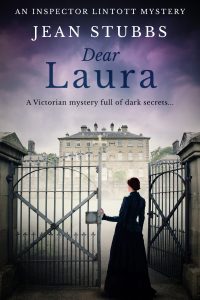
We lived in a world of stories, the line between reality and fiction often blurred. As a child, my mother had always made up plays and stories — her brother an unwilling but worshipful bit part player. A generation later, my mother made up fictional characters for my brother and I — she brought them to life with special voices and we talked to them. Alfred was a gentle and not very bright giant whose answer to any question was 29!
My mother had her first novel, The Rose Grower, published at the age of 35 and from that moment our house was filled with a whole cast of characters. I came home from school one day to find her weeping over the death of Hanrahan (Hanrahan’s Colony). And the hanging of Mary Blandy (My Grand Enemy) brought very dark clouds into our house.
As my mother surfed her way through this creative theatre, we learned to read the signs — coffee cups on every surface, a sink full of dishes and no plans for supper meant a good and productive writing day. A house full of the smell of baking, a gleaming kitchen and rice pudding in the oven either meant the dreaded writer’s block or a completed first draft. So we too surfed, adjusted and gloried in the passing show. My mother always wrote on our vast Edwardian dining table, and her writing companion was always the current much-loved cat. They had their own specially typed title page upon which to sit, since she had learned the hard way that cats like to sit on the top copy with muddy paws! The mystery cat was the black one who sat on a certain stair — but when you went to stroke him he was not there … another blurred line…
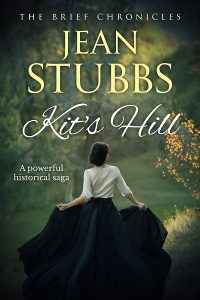 I felt closely involved with each novel as it progressed. At the end of a good writing day, my mother would read aloud to me the latest chapter — a fine reader with a different voice for each character, once more bringing it all to life. She wrote in long hand at first, then, as the book grew, she typed chapters then full copies and carbon copies for her publisher, Macmillan. Later, she was one of the early authors to use a word processor. When the first print draft came from the publisher, we would sit at each end of the dining room table and proofread — calling out corrections to each other and marking them on the manuscript.
I felt closely involved with each novel as it progressed. At the end of a good writing day, my mother would read aloud to me the latest chapter — a fine reader with a different voice for each character, once more bringing it all to life. She wrote in long hand at first, then, as the book grew, she typed chapters then full copies and carbon copies for her publisher, Macmillan. Later, she was one of the early authors to use a word processor. When the first print draft came from the publisher, we would sit at each end of the dining room table and proofread — calling out corrections to each other and marking them on the manuscript.
Publication day was a celebration, shopping an occasion, dinner parties a reason for more excellent cooking, and royalty cheques a relief! When I left home, I greatly missed being a bit part player in this imaginative and unpredictable life of stories — and I missed the ghostly companions.
CLICK HERE TO FIND OUT MORE ABOUT THE INSPECTOR LINTOTT INVESTIGATIONS
CLICK HERE TO FIND OUT MORE ABOUT THE BRIEF CHRONICLES
Deborah Swift is the author of PAST ENCOUNTERS and THE OCCUPATION.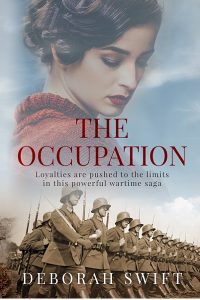
During World War Two, the Channel Islands were the only part of the British Isles to be occupied by the Germans. I saw a picture online of a British ‘bobby’ or policeman talking to a Nazi soldier, and it sparked my interest. Jersey is a tiny island, only eight miles long, so I was fascinated to find out how the population managed to keep up their morale, when as many as fifteen thousand (yes, you read that right) Germans had taken over. What happened to the Jews on the island, or to the other groups that the Nazis considered ‘undesirable’? How did it feel to be invaded by a foreign army?
The story became much more interesting and involved the more I uncovered. At the beginning of the war, Jersey had been ‘stood down’ for military action, as nobody believed the Germans would want such a small territory. Men of fighting age had been sent elsewhere, so it was a population of women and farmers. When the invasion came, it was a total surprise and there were no defences in place. After a brief bombing campaign, the German army just walked in. Before long, white ‘surrender’ flags were fluttering from Jersey houses.
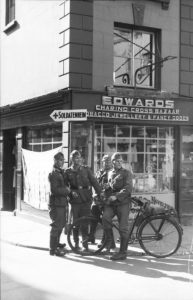
German soldiers standing in King Street, St Helier, Jersey
This was the beginning of Nazi rule on the islands, which was supposed to be a ‘peaceful’ occupation. Of course, when you are invaded it might look peaceful, but underneath the tensions soon began to show. The oppressive Nazi force vastly outnumbered the British people left on the island. Those that remained had to find ways to resist, and ways to outwit the unwanted intruders in their traditional way of life. German rule took over – people had to speak German, cars had to drive on the right, many things that had been allowed before, such as owning a car or a radio, were ‘verboten’ – forbidden. The Germans began a vast building programme to fortify the island, which they intended to use at a military base to attack England. The vast concrete fortifications were built by slave labour.
My story is based on several true accounts, although I have welded them together and compressed them into a fictional narrative. Céline and Rachel’s story was inspired by the true Jersey story of Dorothea Weber, who hid her Jewish friend Hedwig Bercu from the Germans. More on this surprising real life story can be found here.
Fred’s story in The Occupation is based on a number of accounts of life in the Germany army, and in the French Resistance. I was interested to examine the idea of occupation from the point of view of both the occupier, and the occupied. What always interests me in fiction is the conflicts that arise because of the circumstances of war, where one nation is pitted against another, and people who might have been quite amicable before the conflict are forced to swear allegiance to a sharp division between one side and another, when in reality, and in people, many shades of grey exist.
For an overview on the occupation of Jersey, the BBC history site has several pages on this topic. For more on Deborah’s books, find her at www.deborahswift.com or on Twitter @swiftstory.
CLICK HERE TO ORDER THE OCCUPATION
Image Credit: Bundesarchiv, Bild 101I-228-0326-34A / Dey / CC-BY-SA 3.0. Accessed via Wikimedia Commons.
Renowned for her wit, humour, realism and sparkling dialogue, Jane Austen is hailed as one of England’s greatest writers. To celebrate her birthday (16 December 1775), we asked three of our Regency romance authors to tell us what her work means to them and how it has influenced their own writing.
Elizabeth Bailey, author of the Brides By Chance series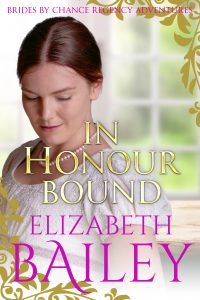
When I first read Pride and Prejudice, I was already educated to a degree on the period by an addiction to the works of Georgette Heyer. It was a revelation reading a novel contemporary to the era. The style was different, uncluttered by period description, Austen assuming that knowledge in her readers not necessarily available to the 20th century eye. Yet the detailed descriptions of the lives she depicts gave me a rich understanding of the thinking and mores of the day, and her dry humour and insights into humanity’s foibles made me realise that people don’t change very much. The same emotional dilemmas beset the human heart, regardless of the time in which they may be living. The trappings may be different, the moral values tighter or looser, but essentially the human condition remains constant. An invaluable lesson for a writer.
Or find out more about the Brides By Chance series here.
Valerie Holmes, author of The Yorkshire Saga
 My work was strongly influenced by Jane Austen’s novels, which are as refreshing today as they were when she wrote them. Social realism and romantic comedy blend subtly to provide moral lessons on life as she saw it: she could have coined the phrase ‘show, don’t tell’.
My work was strongly influenced by Jane Austen’s novels, which are as refreshing today as they were when she wrote them. Social realism and romantic comedy blend subtly to provide moral lessons on life as she saw it: she could have coined the phrase ‘show, don’t tell’.
In 1775, Jane, a lively rector’s daughter was born into a world that restricted women by gender, social strata, the control of male relatives and wealth or a lack of it. Jane described Regency, but did not glorify fashionable finery, wealth, social meetings or snobbery — deliberate or unintentional.
Whether master or servant she wanted people to be unselfish, just and to be aware of the dangers of making quick and personal judgements.
Jane revealed the failings of would-be lovers, but also their ability to change. The resulting memorable novels have happy, hopeful endings.
Order TO LOVE, HONOUR AND OBEY here.
Or find out more about The Yorkshire Saga here.
Natalie Kleinman, author of The Reluctant Bride (forthcoming)
I couldn’t honestly tell you when Jane Austen first came into my life but, when she did, she came to stay. As with any society, there is good and there is bad, the haves and the have nots, but as a reader and a lover of romantic fiction I want to be whisked away to a time and place where I can remove myself from the mundane to a world of fashion, excitement and yes, romance, and that’s what her books do for me. Not that Miss Austen is universally kind to her cast of characters, but isn’t that what makes them seem so real? She has a talent that makes them leap from the page.
The films and TV productions that depict her work have only added to my enjoyment with their amazing sets and beautiful costumes. So on this day, her birthday, I would like to thank her for the abundance of pleasure she has given me over so many years.
Natalie’s Regency romances are forthcoming in 2020 and will feature spirited heroines, determined to succeed against the odds.
Featured image credit: Photo by Elaine Howlin on Unsplash.
David Field is the author of The Tudor Saga Series. The Queen In Waiting is the fifth book in the series.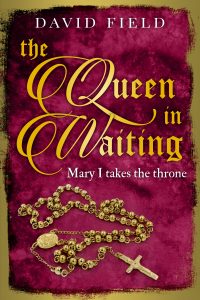
There were many victims during that turbulent period in English history that we call the Tudor era, and not all of them were obvious. ‘Popular’ history has a habit of creating fixed mental images of those who lived their lives in the maelstrom of Tudor Court politics, and it’s only when you examine the actual facts that the doubts begin to creep in. A prime example of a Tudor ‘identity’ whose place in the ‘fake news’ of the period has set her character in concrete is Mary Tudor, the only child of Henry VIII and his first – and longest lasting – Queen, Katherine of Aragon. Mention Mary and the word ‘Bloody’ appears like magic before her name, conjured up by usage and with little regard to the circumstances that led her to burn Protestants at the stake.
Mary was born in February 1516, the only surviving child from her mother Katherine’s long and miserable litany of stillbirths and miscarriages. Katherine may well have suffered from gynaecological problems that Mary inherited, because Mary is recorded as having endured menstrual disorders as a young woman. These were no doubt the early warnings of the phantom pregnancies and uterine blockages that would deny her issue of her own, and lead ultimately to her death.
But in her very early years we are given a picture of a rosy-cheeked, chuckling little infant with her father’s distinctive red hair being bounced gleefully on Henry’s knee as he resolutely hid from the world his inner torment that Mary was not a boy. His obsession with begetting a male heir, more perhaps than any natural lust for Anne Boleyn, led to Katherine’s eclipse, and as she entered puberty Mary was forced to watch from very distant sidelines as her beloved mother suffered the public humiliation of the annulment of her marriage to Henry, and her replacement on the throne by ‘the night crow’ Anne Boleyn. Anne completed the insult by giving birth, in almost indecent haste, to Mary’s half-sister Elizabeth.
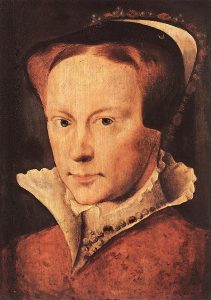
Mary Tudor
Humiliation was piled on humiliation as Mary was declared a bastard, and her place in the succession was taken by Elizabeth. The newly demoted ‘Lady Mary’ was stripped of her own former household and sent to live with Elizabeth in Hatfield House, Hertfordshire, denied access to her mother Katherine, who pined her way to a heartbroken death in a remote castle in Cambridgeshire. Mary was reported to have been ‘inconsolable’ at her mother’s death, and suffered from unspecified illnesses for several years during which she was estranged from her father.
The execution of Anne Boleyn and the bastardisation of Elizabeth would have been of little comfort to Mary once Henry’s new wife Jane Seymour gave birth to the heir apparent Edward, who, under the baleful influence of the Seymours who governed the nation as part of his Regency Council, proved to be far more aggressively Protestant than his late father, while Mary was equally determined to both pursue and promote the Catholic religion of her late mother. The two never saw eye to eye, and during a disastrous attempt at reconciliation during the Christmas of 1550, the thirty-four year old Mary was reduced to tears when rebuked by her thirteen year old half-brother, in front of the entire Court, for her fervent adherence to her faith.
The death of Edward was probably the greatest catalyst for Mary’s subsequent actions. It was learned that in his fear that England would slide back into Catholicism should Mary become Queen, Edward had bequeathed the throne to their distant cousin Jane Grey, from an obscure Leicestershire offshoot of the wider Tudor family. Not only that, but the Council of State initially supported Jane, and Mary was obliged to claim her throne by superior force of arms.
She was now 37, beyond the customary ‘sell by’ date of Tudor women, unmarried, childless, and suffering from gynaecological issues. She was probably both flattered and relieved to receive an offer of marriage from her second cousin Philip of Spain. There seems to be little doubt that for him it was a marriage of greed, furthering his ambition to rule most of Europe, but for Mary it seems to have been a love match. Then history repeated itself through a phantom pregnancy and a terrible slow decline with what may well have been ovarian cancer. One can only feel desperately sorry for the lonely old woman on her death bed when one reads that, on learning of Mary’s demise, Philip wrote to his sister that “I felt a reasonable regret for her death.”
Is it surprising that Mary Tudor was hardly a bundle of laughs during her lifetime? Her mother was publicly humiliated, she herself was bastardised by her loving father, her half brother ridiculed her faith, her Council of State preferred a country girl over her as Queen, and her younger sister was prettier, more socially accomplished, and more loved by the people, while her husband regarded sexual relations between them as some sort of public duty. Add to that her almost permanent ill-health, and it is difficult not to reach behind the public persona she left behind in order to give her a consoling cuddle.
In the latest novel in my Tudor series, The Queen in Waiting, I chose to depict the reign of Mary through the eyes of Elizabeth, another victim of their times. I could only describe the events of Elizabeth’s life through the actions of Mary, and they were harsh when considered without regard to the events that forged them. Sinned against or sinning? Your choice.
Order THE QUEEN IN WAITING here.
Or find out more about The Tudor Saga Series here.
Image credit: Portrait of Mary I of England and Ireland by Hans Eworth. (Public domain).
Chapter 1
‘This —’ The owner of the house cleared his throat and tried again. ‘This is highly irregular.’ He tapped the letter from Whitmore Photographic. ‘The proprietor assures me that he will personally be taking Flora’s portrait.’
Julia McAllister glanced at the four-year-old, sitting bolt upright in her best pink taffeta dress. A froth of ringlets cascaded over her shoulders, and the silver locket round her neck twinkled in the meagre light. With her favourite dolls cradled in her arms, three of them in each, you could be forgiven for thinking the little mite was still alive.
‘My employer, poor man, his health took a turn for the worse.’ Julia flashed a tortured smile. ‘His heart, I’m afraid. Notoriously unreliable.’
‘Yes, but even so.’ Her client’s eyebrows met when he frowned. ‘A woman?’
Julia slotted the plate holder into her camera. She bit her lip, and reminded herself that this was just a job, another routine portrait — that she should knuckle down, take the picture, forget the subject was a baby.
‘Mr. Whitmore would not have entrusted me with such a sensitive task,’ she assured the grieving father, ‘unless he had every confidence in my ability.’
‘For my part —’ his wife’s voice was little more than a croak — ‘I’m comforted that a member of my own sex is looking after Flora. Women,’ she added shakily, ‘are infinitely more sympathetic, so come, dear.’ She pulled her husband’s sleeve. ‘Let us leave Miss McAllister in peace.’
Mrs., Julia wanted to correct. It’s Mrs. McAllister. But the death of their only child was testing the couple’s strength, their marriage and, judging from the cross on the mantelpiece that had been laid flat, their faith in Jesus Christ. Like families everywhere, too much in life had been taken for granted. It was only when the flame was snuffed, in this case without warning, that it was driven home how little they had to remind them of their loved ones. They wanted this picture to cling to and cherish.
‘Rest assured,’ she said, ‘I will do your daughter proud.’
Alone in the parlour, Julia took a series of deep breaths and forced herself to block out the red flock walls that threatened to close in, the gagging scent of lilies, the silence of the grandfather clock, whose pendulum had been removed and wouldn’t be replaced until Flora lay in her grave. How sad. How desperately tragic. When your husband dies, you become a widow. When your parents die, you become an orphan. Yet there’s no word to describe someone who loses a child.
To calm her nerves, Julia followed her familiar ritual of running her hand over the Spanish mahogany case of her camera, inhaling the leathery tang of the bellows and fingering the handmade dovetail joints. (None of those factory-made monstrosities, thank you very much.) By the time she’d given the brass fittings one last unnecessary polish, she felt in control, and disappearing under the heavy dark cover, she examined the image. After all this time, she hadn’t grown used to seeing the world upside down, but there, now — a quick tweak to the focus, a slight tilt to the left, a touch of back swing and —
Mother of God!
The girl’s hand moved.
Nonsense. It must have been a trick of the candles, and that was the problem with having the curtains drawn and the mirrors draped in black. The shadows played havoc.
There! It moved again!
Julia sloughed the sheet from her shoulders and squinted. Impossible. Flora fell downstairs and snapped her neck. In fact, the only thing holding her upright was a metal clamp under her pretty lace collar, and a rope, artfully hidden by dolls, tying the girl to the chair. Julia should know. She’d put them there.
No, no, no. The dead don’t —
‘Ow!’ a voice squealed.
‘Were you trying to steal that locket?’ Julia grabbed the young boy hiding behind the body.
‘Lemme go, you’re pinching!’
‘Did you think I wouldn’t spot a third hand? A third hand, I might add, caked with a six-inch layer of grime.’
‘I said lemme go!’
‘This will be a double exposure in every sense, if you don’t quit squawking.’ Julia examined the urchin in front of her. Eight, was he? Nine? ‘How did you get in?’
‘Door’s open, innit.’
Of course. The front door had been left partly open for mourners to enter without jarring the nerves already stretched past breaking point.
‘So you thought you’d sneak in and steal the locket that probably contains a clipping of her hair, which is all her mother has to remember her only daughter by?’
The defiance crept out of the boy’s face. ‘You gonna report me to the rozzers?’
‘No.’
‘Why not?’
‘Because these are good people, who don’t need to know that some stray urchin crept in their house, defiled their daughter’s body and was caught stealing her precious locket. They’ve suffered tragedy enough, and I won’t have you adding to their misery.’
‘Wotcha gonna do, then?’
‘I am going to take this girl’s portrait, that’s what I’m going to do, and you, sir, are going to help me.’
‘Me? I don’t know nuffin’ about photographs.’
Julia fluffed the girl’s lace collar to hide the mucky handprint on the taffeta. ‘You don’t need to. Just hold the curtain open — the left one if you please — to throw some decent light in the room.’
‘Like that?’
‘Exactly like that.’ She pressed the shutter release, changed the plate, took another, then another, then another.
‘Why d’you take so many?’ He sniffed, and wiped his nose on his sleeve. ‘It’s not like she’s gonna move and throw the focus out.’
‘For someone who professes to know nothing about photography, you seem remarkably well informed. However, your expertise is no longer required, young man. Time for you to leave, preferably in the same covert manner in which you arrived.’
‘Can’t I —?’
‘Shoo.’
Julia packed up her camera, collapsed her tripod and dismantled the contraption that was holding Flora upright, before packing her accessories back in the case and promising the grieving couple that Whitmore Photographic would be giving Flora’s portrait the utmost priority.
Outside, Julia felt the weight lift from her. After a month of non-stop drizzle that had combined with the smoke from the factories to form a choking, brown, sulphurous stew, the sun was a welcome sight, and Julia wasn’t alone in her joy. Half the population of Oakbourne, it seemed, had turned out to celebrate. The street shimmered with jewel-coloured silks, wide hats festooned with feathers, wasp waists, and shoes with toes so pointed they could put an eye out. Impressive moustaches paraded beneath dark derby hats. Parasols twirled, hansom cabs rattled, and (shock, horror!) could that really be ladies riding bicycles in bloomer suits? Flower girls proffered violets, carnations and stocks a penny a bunch, puppies chased their own tails and a boy played a harp taller than himself to an enraptured audience on the corner.
Stopping at the strawberry barrow, Julia smelled her scrawny assistant before she saw him. ‘You again.’
‘Seeing as how I helped out back there, I thought you might wanna give me sixpence for me troubles.’
‘How about I give you a clip round the ear?’
‘Cow,’ he muttered. Julia checked her black beaded purse. Strangely, it was still there. ‘Threepence, then.’
Dear Lord, give me strength. ‘Suppose we say no pence, and I don’t call the police?’
‘Suppose I went up your chimney and cleaned it?’
‘You’re too old, you’d get stuck, and by the time you’d starved to death and your skeleton dropped out, I’d have died from frostbite, waiting. Go away.’
‘I’ll settle for a ha’penny.’
Julia pulled the boy out of the path of a hackney cab and pointed with her strawberry in the opposite direction to which she was headed. ‘Go. Now.’
‘S’pose I said I wasn’t stealing nuffin’. S’pose I told you, I just wanted to see what a pretty girl looks like dead, coz the only corpses I seen are under the bridges by the canal, and them’s anything but pretty.’
Against her better judgment, Julia gave him her last strawberry. It disappeared whole, green bits, stalk, and all. ‘What’s your name?’
‘Bug.’
‘Bug?’
A grubby shoulder shrugged. ‘Short for Bugger Off, which is what most people —’
‘No explanation required. In fact, I can well see the attraction in offering that particular piece of advice, but tell me — Bug — when was the last time you took a bath?’
‘What’s it to you?’
‘Personally, very little.’ Julia set down her clutter of camera, tripod, cases and clamps. ‘In terms of community service, however, I feel it only fair to remedy the situation.’
Grabbing him by the collar with one hand and the seat of his moth-eaten pants with the other, Julia dropped Bug in the horse trough.
The resulting yells were more than satisfactory. Even if the language wasn’t.
But it was little Flora’s face that stayed with Julia as she pushed through the crush of Cadogan Street and into Westgate Road. Requests for post-mortem photographs — memento mori, as they were popularly called — were becoming more and more common, and this was by no means the first that Julia had taken. Some of her subjects were old, well into their eighties, some were children, a few already laid out in their coffin. Rather memorably, one old chap had begun to decay.
For the sake of authenticity, some of her clients she propped standing up, some with their heads in their hands, some leaning back with a newspaper as though they’d nodded off in mid-read. One lady the family had wanted sitting at a table laid with glassware, cutlery and plates, as though waiting for her dinner guests. Many, like little Flora, had their eyes open. With others, she painted their eyelids to make it look like they were posing for the camera. She perched dogs on their laps. (Stuffed, of course — live animals don’t sit still long enough for the exposure). Several were arranged with their entire families around them and on one notable occasion, it had been impossible to tell which of the eight was the corpse.
None — not one — of those subjects had affected her like this.
Perhaps it was because Flora was an only child, and the mother was of an age when she was unlikely to conceive again. Perhaps it was the dignity with which the couple bore their grief. Perhaps it was the little girl herself, taken in the blink of an eye. Either way, this morning left a nasty taste in Julia’s mouth. One that even the reddest, ripest strawberries couldn’t take away.
‘Ah. The lady photographer, I presume?’
Julia eyed up the man waiting outside her shop, set down her equipment and proceeded to unlock the door. He didn’t look bereaved, was too old to be getting married, and too young to have a daughter needing a wedding recorded for posterity. In fact, in his smart grey lounge suit, derby hat and cocky air, she wouldn’t mind betting he wanted to commission a portrait of himself. Recorded for posterity.
‘What exactly are you wanting, Mr —?’
‘Collingwood.’ For all the width of his smile, it didn’t reach his eyes. Eyes, the artist in her noted, the same hue as his suit. ‘Inspector. Detective Inspector Collingwood, of the Boot Street Police Station. You’d be Miss —?’
‘Mrs.’ Julia hoped that stacking her equipment would excuse not shaking hands. Shaking being the operative word. ‘It’s Mrs. McAllister,’ she said. ‘Now what can I help you with, Inspector? An official police photograph, taken in the station?’
‘Not exactly.’ He walked slowly round the shop, examining the frames on display, the portraits hanging in the window, the showcase of photos, the little china dogs on sale as a side-line. ‘Does the name Eleanor Stern mean anything to you?’
Relief washed over Julia, leeching the strength from her knees — its place instantly taken by a new surge of anxiety. Nellie, Nellie, what have you done now?
‘Can’t say it does.’
‘Lily Atkins?’
An image flashed through Julia’s head. Black stockings drawn over chubby knees. Enormous breasts. The coquettish twist to Lily’s lips as she tweaked her own nipple.
‘Again, no, doesn’t ring a bell.’
‘Hm.’ Collingwood paced a bit more. He stared out of the window at the Common, where lovers strolled arm in arm beneath the oaks, ladies of a certain age walked their Pomeranians, and nannies in uniform pushed perambulators as they eyed the soldiers from the corner of their eye. ‘Bridget O’Leary, though. Surely you know her?’
‘Sorry…’ No smile was ever more apologetic. ‘Then again, a lot of ladies have their portraits taken, Inspector. I could check the ledger, if you like?’
‘That won’t be necessary.’ The pacing changed from clockwise to anti-clockwise. ‘Mr. Whitmore.’ He ran his hand across a silver frame with embossed cherubs on the corners. ‘He left you this business when he died, is that correct?’
‘He did.’
‘Yet four years later, you haven’t changed the name above the shop, and still pretend to clients that Samuel Whitmore’s alive?’
If it had been anyone else, she would have passed that off as respect to her benefactor’s generosity. Unfortunately, there are only so many lies you can tell the police.
‘Pretend is a strong word, Inspector. As a woman fighting to survive, not only in commerce but in what is very much a man’s world, I find it simpler not to disabuse them.’
‘Of course.’ Collingwood switched his derby from his left hand to his right, then back again. ‘And you’re not familiar with the names Lily Atkins, Bridget O’Leary and Eleanor, more commonly known as Nellie, Stern?’
‘I thought we’d already agreed I am not.’
‘Had we? Because these photographs were found in their rooms.’
One by one, he laid them on the walnut counter like a deck of cards. All three were along the lines of the image that had flashed through Julia’s mind a moment before. Although in Nellie’s case, perhaps a little more so.
‘Inspector!’ Julia swept them off the counter. ‘How dare you bring such filth into my premises!’
Something twitched at the side of his mouth as he bent to retrieve them. With luck, it was indigestion. ‘My apologies if the content offends you, Mrs. McAllister, but you notice that, on the reverse of these prints, is your stamp.’
Damn. She never put her address on the back of any incriminating — Wait. Whitmore Photographic? In her distinctive purple ink…?
‘I have no idea how that got there.’ And that was the truth. ‘But as far as I’m aware, no law has been broken in either posing for pornographic photographs, or taking them.’
‘Quite so. The crime lies in the possession and distribution of lewd material, although it piques my interest that you’re aware of this fact.’
A trickle of sweat snaked down Julia’s backbone. ‘You wouldn’t believe the requests I receive from certain members of the public.’
‘Hm.’ Collingwood’s grey eyes — wolf’s eyes — held hers for what seemed like two days, but was probably only a couple of seconds. She swore she heard the dust motes hitting the ground. ‘Your husband.’
‘James.’
‘Where might I find him?’
‘The Sudan.’
One eyebrow rose. ‘Fighting in the campaign?’
‘Buried there.’ Julia smoothed her skirts. ‘Now then, Inspector, if you don’t mind, a grieving family needs a portrait of their daughter — the only image they will have to remember her by.’
‘I understand. You need to get to work.’
‘The matter is pressing, and despite my trade plate on the back of these vile photographs, I assure you, I know nothing of their provenance, and to be honest, I’m offended that you think me acquainted with strumpets such as these.’ She forced a smile. ‘On the other hand, I can see how you made the connection, and — well, far be it for me to tell you your job, but wouldn’t it be simpler to ask the girls about the pictures?’
‘Strange as it might seem, that thought occurred to me, as well.’ Collingwood picked up a china dog, a King Charles Spaniel as it happened, examined the pottery mark, then replaced it in the exact position in which he had found it. ‘The problem with that line of enquiry is that all three are dead.’
‘I am sorry to hear that.’ Nellie? Lily? Little Birdie…?
‘Murdered,’ Collingwood said quietly. ‘And from what I can gather, Mrs. McAllister, you work alone on these premises, without an assistant.’
Breathe … breathe…
‘I’m sure there’s a point to that observation, Inspector.’
‘My point, Mrs. McAllister, is that all roads lead to Rome.’ He picked up another china dog, a Skye Terrier, and proceeded to examine it. ‘And you, it would seem, are standing in the middle of the Forum.’
Need to keep reading and find out what happens to Julia? Buy Snap Shot here now!
On Thursday evening, we attended the Crime Writers’ Association Dagger Awards at the Leonardo Royal Hotel London City – a starry celebration of the best crime writing of the year in the UK.
We are the proud sponsors of the Sapere Books Historical Dagger Award, which recognises the best historical crime novel of the year. From a shortlist of six, the fabulous Destroying Angel by S. G. MacLean was chosen as the winner!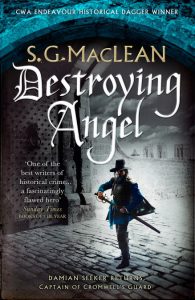
Set in 1655, Destroying Angel is the third novel in MacLean’s popular and critically acclaimed Seeker series. The first book in the series, Seeker, won the Historical Dagger in 2015, so this is a second win for MacLean’s excellent series.
This third book follows Captain Damian Seeker, a trusted member of Oliver Cromwell’s guard, as he travels to the Yorkshire village of Faithly to enforce the government’s anti-Royalist laws. Upon arrival, Damian is invited to dinner at the home of Faithly’s Puritan commissioner, Matthew Pullan – a tension-filled gathering that ends with Pullan’s young ward, Gwendolen, being fatally poisoned.
With suspicion and bitterness rife in the village, Damian must discover whether Gwendolen’s death was an accident or something more sinister. Atmospheric and full of compellingly unsavoury characters, Destroying Angel’s meticulous historical details and intricate narrative keep the reader absorbed throughout.
We would like to congratulate S. G. MacLean on her well-deserved win and applaud all of the shortlistees for their wonderful work!
You can order all the books in S G MacLean’s Seeker series here.
We would also like to say a massive thank you to CWA Chair Linda Stratmann, Vice Chair Jean Briggs and everyone else on the CWA committee who put in some much hard work organising the event! We are very happy to be building an ongoing relationship with the Association and we can’t wait for next year.
We are the proud publishers of both CWA Chair Linda Stratmann and Vice Chair Jean Briggs’ novels.
Click here to find out more about Linda Stratmann’s Mina Scarletti series.
Click here to find out more about Jean Briggs Charles Dickens Investigations series.
CHAPTER 1
1805, North Riding, Yorkshire
Willoughby Rossington gulped the much needed ale down his dry throat, sighed with relief and placed the pewter tankard on the upturned barrel, which doubled as a table. It had been a difficult mission and a hard ride, but Willoughby had managed to flush out his prey, a highwayman, and after a chase across exposed moorland had relieved the country of one more specimen of murdering vermin. Now, he leaned patiently back on the settle, which lined the alcove next to the rear door of the inn, watching for the York coach to arrive.
Discreetly, Willoughby checked the shallow cut on his wrist. It had not been deep enough to sever the vein. Taking a clean strip of linen from a side pocket of his case, he tied it around his wrist as best as he could, using his free hand and teeth. This was not the first time he had been wounded. A pistol shot had caught him as he was chased across a French beach the previous summer. Fortunately, he had not been on his own and was tossed into the bottom of a fishing boat waiting to return him to England. His uncle had called it his initiation — a rite of passage. The slight scar above his left ear would apparently serve to remind him to take greater care. He slipped his wrist inside his cuff and smiled — no more scars, he thought.
A flurry of activity broke out in the yard.
“York coach!” A horn was heard as the vehicle approached.
Willoughby drained the tankard, ran a hand through his fair hair before replacing his hat, picked up his bag and headed out. He was anxious to be on his way again. The coach had made good time and was busy. A family with two young girls filled most of the inside, so it was with some relief that Willoughby found himself climbing on top. He settled as comfortably as he could, holding on firmly as the horses pulled their burden back out onto the open road, increasing in speed and momentum. Willoughby felt the invitation to attend his uncle, Lord Nathaniel Rossington, in his pocket and relaxed into the journey. The rush of air on his face made him smile. He anticipated his uncle’s next set of orders and relished the prospect of serving his country further.
The coach sped between the open moors and fields, slowing as it approached the ancient city of York. Willoughby was aware of the noise emanating from the lunatic asylum as they passed by. He swallowed, feeling pity for the poor souls trapped inside. That would be hell on earth to him, to be trapped like a caged animal, or worse, chained like a bear, perpetually baited.
The vehicle entered through the ancient stone archway and slowed to navigate the heavily soiled mire, making the going heavy as it passed through one of the ancient crumbling Barrs, ready to traverse the narrow lanes inside the old walls, where a mixture of wooden medieval homes with their jutted fronts gave way to the fashionable new stone buildings.
Willoughby looked on in wonder at the might of The Minster, the magnificent cathedral that dominated the cobbled together collections of buildings around it. No matter how often he saw it, he was always impressed. York was a place which confused and delighted his senses by turn. Contrasts were everywhere: putrid stench mingled with the more pleasant aromas of the market, rich living alongside the impoverished.
The coach came to a lumbering halt in front of an old inn. A sign swung dubiously above the door of a phoenix rising from the ashes. It was a sorry depiction of what should have been a lovely image, buffeted by the wind and heavy rain.
The innkeeper rushed around the corner and greeted his new arrivals, despite the pouring rain. All was a hive of activity. A small step was brought for the passengers to climb down onto. Willoughby knew that Lord Rossington would have been informed that the coach was in. He would be expected to report shortly but he was tempted to go inside and warm and dry himself.
Beth heard the excitement as word reached the inn that the coach was approaching. She had been preparing food in the back in readiness. In her dreams, she would get on the coach, dressed smartly in a travelling coat and be taken to some grand house where her husband or, more likely, her lover, would be awaiting her return. She put down her bread knife at the side of the stone sink, brushed her hands against her coarse skirts and glanced anxiously around her. Dotty, the cook, had gone into the back yard and Irwin Wilkes had left earlier on ‘business’. He would normally greet his guests and then return inside — to her. She grabbed her old shawl and pulled it around her shoulders, thinking that he must have been delayed.
Beth knew if she was caught shirking, she would be in for trouble, yet the yearning inside her made her desperate to see who the coach had brought in. The longing to escape the inn, her hellhole, was growing daily. She had nothing of her own and no one to go to, but the coaches came and went and each time her heart desired to go too. She was the bird lost in the ashes and she would take flight, unlike the bird that was trapped on a piece of wood swinging above the doorway.
She ran her fingers through her rich auburn hair, its fiery colour subdued by the need of a wash, though she kept it in relatively good order as she hated the knots. Beth peeped through the serving hatch just to make sure that Irwin Wilkes had not become distracted by his friends and was sitting on his favourite settle. No, he was hovering somewhere outside in his coat. He owned the inn and, although it hurt Beth to think it, he also owned her. Two seasons ago she had been bought by coin from the orphanage where she had grown up as a young woman to serve drinks at the inn. She had no say in the matter, no rights, and was told to be grateful her fate was not a worse one. It was go with Wilkes or live on the filthy streets.
Peering through the musty, smoke-filled tap room she could see the passengers alight from the coach. One man stood alone and slightly to the side. Beth watched him. He did not look as if he intended to enter, she noted with disappointment, but stood surveying the city. He was tall and from what she could see of his features, between high collar and tall hat, handsome. He looked to the inn, but despite the soaking he had had, he decided to move off.
He must be lost, Beth reasoned, so she straightened her shoulders and stepped forward, ready to cross the room and welcome the guests and offer the stranger her help before he decided to leave — if she could. There was something about him that drew her to him. He would fit the image of the man in her daydream well enough. Even though he was clearly a gentleman, she thought, a girl can dream, can’t she?
“Beth!”
She froze. Wilkes’s footsteps neared as his boots sounded upon the flagstone floor behind her. The weather must have dampened his enthusiasm for being a good host.
“Where d’you think you are off to, my girl?”
She could smell his musk. He spun her around, whipping the worn fabric from her shoulders. The word ‘my’ resonated in her head as the usual feelings of disgust stirred within her belly. He threw his coat onto a stool.
“Nowhere, Mr Wilkes. I was just a bit cold and I heard all the noise.” She tried to keep her voice calm as getting flustered only provoked his temper further. Her eyes were downcast; he took it as a sign of submission. She used it to shield the hatred that burned within them.
“Cold, eh,” he repeated, and chuckled. “Go on up to me room. I’ll be there shortly.” He slapped her rump as she stepped away.
Beth tried not to show him fear or her anger. She picked up her shawl; moth-bitten it may be, but it was hers, and then climbed the wooden steps to his room above, cursing her stupidity and dreading his idea of giving her warmth.
Willoughby stretched to his full height. He was tired, his wrist was sore, but he needed to see his uncle — then he could think about resting before setting off again on his next mission. He was in the north; he was so near to where his father had been murdered. Willoughby’s heart desired one mission more than any other: to investigate that ‘accident’. No one had been brought to justice. Five years later and he had proved to his uncle he could wheedle out vermin and be trusted, so why not now avenge his father’s death?
He approached the grand façade of the elegant terraced house. Willoughby had to stay level-headed; displays of emotion were not appreciated — ‘anger was to be challenged into action, not allowed to burn and destroy internally’. His uncle was full of such pearls of wisdom.
He lifted the brass knocker, then crashed it against the door and waited until a liveried servant opened it to him.
“Is my uncle at home?” Willoughby asked.
“Your uncle? May I have your card, sir?” The man spoke stiffly and held out a gloved hand.
Willoughby wondered if he was one of his uncle’s agents or just a household servant; either way, he acted like a pompous fool. Willoughby pulled the invitation from his pocket, returning it to its sender. It was his pass to a very different world — one in which he thrived. The man responded with a cursory look up and down as rain dripped off Willoughby’s greatcoat and onto the doorstep of the elegant house.
Willoughby met the man’s stare in challenge and made to step forward. It had been an uncomfortable journey and his patience was becoming worn. The servant closed the door on him, disappearing with the letter. Willoughby balled his fist and looked across the sodden road, waiting patiently, albeit reluctantly, to be allowed entry. A few minutes later the door reopened.
“My apologies, sir.” The man bowed low as he stepped back, allowing Willoughby to pass by him, whilst taking his hat and coat. “This way, if you please, sir.”
Willoughby followed him across a chequered floor and down a narrow corridor to a set of doors towards the back of the house. Beyond them was his uncle’s study. Immediately Willoughby entered, the doors were shut securely behind him, not one, but two sets separated by a good thick curved wall. This was a necessity, as his uncle could not afford to have his private discussions overheard by anyone.
Willoughby was surprised that the normally officious man was not sitting and looking imposingly at him from behind the large mahogany desk as was his habit. Instead, he stood silently gazing at a painting that adorned the wall above the marble fireplace. Immaculately dressed in a perfectly fitted black coat which accentuated his straight and noble posture, he held his hands clasped behind his back. “Do you know what this is, Willoughby?”
Willoughby sighed. Never a warm word of welcome, but he knew how to respond. “It is a seascape, Uncle.” Willoughby stared at it emotionless, almost mimicking his uncle’s dour manner until he saw a flash of annoyance showing in the older man’s eyes. “A stormy sea and a rescue boat being hauled into the water by the local villagers.” Willoughby admired the movement and energy within the painting. One could almost feel the tempest raging and the desperation of the people to launch the life-saving boat into the water.
“What else can you see? Where do you think it is set?” his uncle persisted, staring at him, waiting for Willoughby to look beyond the obvious. It was like a game, a grooming, which both his uncle and his father had played with him since he had been a child.
Willoughby stepped forward, relaxing his pose. He looked at every feature of the painting: the group of people at the water’s edge, the windmill behind a row of small fishermen’s houses, the firm flat sands, the high rugged headland in the distance and the menacing sea. “By the attire of the people and the geographical features of the land, I would say this is a fishing village on the remote north-east coast.” Willoughby glanced at his uncle, waiting for acknowledgement or approval.
“And what reasoning is behind this decision, Willoughby? Have you proof of a logical nature or is this just a wild guess — no more than a lucky whim?”
“No, Uncle, it is not a guess. The boats in the background are the cobles of the Yorkshire design. They land on the flat sandy beaches, cutting through the breakers. The sea is treacherously turbulent and that area is infamous for its wrecks. To the right are the ancient marshlands and dunes, whilst to the left, the steep jutting headland forms a dramatic feature. The boat is one of the new designs of ‘lifeboat’, which I believe has to be pulled manually down to the beach by the villagers in order to launch it successfully.”
His uncle released his hands, relaxing his stance and patted Willoughby firmly on his shoulder. “Excellent observations, Willoughby; you show some intelligence. I’m glad your time at Cambridge was not wasted; you have at least learnt to deduce. So tell me, why am I showing you this merciless place?” Nathaniel Rossington flicked the tails of his coat up into the air and rested against his desk.
“You wish me to go there, no doubt still wearing the robes of a priest and save the poor from the endless toil of their lives and their mortal souls from hell itself, Uncle?” Willoughby raised a cynical brow, as he knew Nathaniel was a sceptical man, a non-believer, a fact he kept very much to the closest family members to avoid unnecessary problems within the society with which he mixed.
“I would say they are beyond salvation and, personally, I should let them rot away within their own grimy existence.”
Willoughby was not surprised by the man’s sentiment, he had his sights set on saving a nation, apparently forgetting at times that the word represented common men eking out a ‘grimy existence’ and not just the land itself.
“However, I would also remind you that this is not a game anymore, Willoughby. It is as serious as life and death … yours included.” Nathaniel looked at Willoughby, whose gaze did not waver despite his uncle’s powerful withering stare. However, Willoughby did note the fleeting glint of amusement in the man’s eyes — a rare sight.
“There are treacherous men earning a lot of money in the region — corruption throughout and within the villages which has spread to the normally decent social strata. I need you in there.” He pointed to the painting, his manner intense. “Yes, don your priest’s garb and start preaching and listening to as many confessions as you can…”
“Uncle, I am not a priest. I have chosen a very different path now.” Willoughby spoke out defiantly, then instantly wished he had controlled his tongue. “Surely, I have proven to you that I would have been wasted in such a role when I refused to follow the path which was laid out for me by Uncle Jeremiah, God rest his soul. I would be better serving as a soldier — please, sir, allow me to hunt down Father’s murderers or obtain me a commission so that I may serve, with your blessing.”
“I am fully aware of what you are and what you are not. Unless you wish me to return you to ‘your initial path’ and insist that you are to be permanently planted in a respectable parish with a fat wife and several noisy brats to feed, you would do well to remember how much I do know about you, Willoughby James Rossington!” Nathaniel’s words were harsh, but as always, controlled. “You serve best where I place you. Your brother serves the King, you fight a very different battle and I need you here to do it!”
Willoughby nodded, annoyed that this man who had acted as a father to him when his own died prematurely always placed his duty first. More disastrous news had followed the next year when his elder uncle, Jeremiah, had perished in a riding accident. Nathaniel was totally devoted towards his King and country. He buried his pain deeply, though, Willoughby realised. Willoughby had been sent to many a dark place concerning his clandestine role. It had shown him a world very different from the old clubs of St James Street in London and the halls of Cambridge. Nathaniel was a man who demanded and expected nothing less than total obedience from those who served him, whether relative or not, and that had earned him Willoughby’s absolute respect.
Willoughby did not want to don the garb of the priesthood. He had his own faith, but preaching was something he found no comfort in. It irked him that he had been made to hide within the role in order to be of some use to his uncle. He should have been the soldier — Charles wanted to stay on the estate, but the uncles had insisted he fought for the family honour, leaving Willoughby’s path clear for the priesthood.
“You will win the hearts of one or two of the local people. Use your stealth, wit and common sense, but, Willoughby, remember this is no fool’s errand. We have reason to believe that the rot that has set in this area is deep and complex. Every one living there is as guilty as their neighbour of plying the trade. They will not break their ungodly ranks and speak out… Strangers are like foreigners to them, they live in greed and ignorance. Only last month, a riding officer nearly had what brains he possessed spilt from a broken skull after he came across a group of ‘fishermen’ moving a catch. It was not crabs they had plucked from the sea. The fool shouted warning before shooting!” Nathaniel shook his head. “You have two names to keep in your mind, and I demand that you make your initial contact with them as a priest, someone people will pass by, seeing the uniform and not the man, yet, hopefully, show respect and trust.”
Willoughby was surprised by the severity of the tone in his uncle’s orders.
“Go to Major Walter Husk, who has a temporary barracks in Whitby. He will brief you on the known smuggling activity along the coast north of Whitby, and then to Reverend Artemis Burdon of St Aidan’s at Ebton. He will take you in and give you a base from which to work. I do not want you to use the name ‘Rossington’. Our family name will be kept out of this. You travel as Reverend Mr Willoughby James. Make sure you conjure up a credible past-life, which does not link you back to the family or me. You are working incognito. Only Husk and Burdon will know the truth. Both are loyal to the Crown and…”
“My father’s murderers…” Willoughby’s face was instantly animated. It was on Ebton beach that the body of his father, Joshua, had been washed up. “Is it possible that Father’s murderers still walk free after nearly six years?” Each time Willoughby had requested to investigate it he had been turned away with other missions to attend to, keeping him far away from this part of the country. It was always with the promise that when the time was right, his turn would come. Now he needed to know if that time was here. Willoughby clenched his fists at his side as the years of frustration and training mixed with his eagerness to set off on his own personal quest grew.
“Of course it is possible, Willoughby!” Nathaniel stood tall and looked into Willoughby’s deep brown eyes as if analysing his private thoughts. “You need to put all personal issues aside. We both do. We are working for our country, for the very survival of our nation.” Nathaniel swallowed as if struggling to keep his composure. “We are at war with the French. The trade forgets its loyalties and anything is sold for the right price. If, and I mean if, there is a link between my brother’s early demise and the current tenuous situation, then I expect you to discover it and act accordingly. They went to ground, but have now risen stronger than ever. But remember this: King and country first, revenge last! Do I make myself clear?” Nathaniel raised his eyebrows.
“Yes, sir!”
“Oh, and one more thing to remember: the harbinger of evil can be both male or female. Your father was engaging in an affair as well as his ‘work’. It may have been the cause of his downfall.”
Willoughby’s attention had wandered to the painting, straining at the menacing sea and the headland beyond. He swallowed, for it must have been a cold and lonely death to die in those waters alone. At the mention of an affair, so calmly announced, Willoughby’s head shot back around to look at his uncle.
“Affair? With who?”
“I do not know who. You will not fall into the same trap, will you, my young priest?”
Willoughby was taken aback. He had never thought it possible that his father had had an affair, for his mother had died of a broken heart four years since.
Nathaniel patted him on the back firmly.
“Here is a purse. The sooner you go and pay your respects to your aunt, the sooner I shall have peace from her on this matter. I swear the woman can hear through the walls of a fortress. May your God be with you, and I hope you come back to us safely from this vipers’ nest, Willoughby.”
Have to keep reading? Buy To Love, Honour and Obey now!
Chapter One – 1891
When pathologist Jacob Bryce got to the third stab wound, he knew that it was not one of the ordinary back-alley robberies which constituted most of the murders in New York City’s notorious 4th Ward.
Most of the blood, concentrated around the woman’s chest and stomach, had coagulated into a thick skin, indicating that death had taken place several hours beforehand. Bryce had to use alcohol to clean and loosen the blood in order to view those first puncture wounds.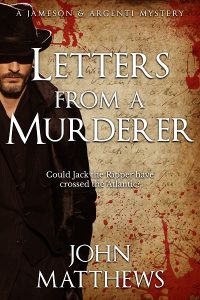
It was the practice at Bellevue hospital that whenever a body was brought in for autopsy one of the crime-scene detectives should also be present to pass on key information when queried. Bryce looked towards the attending detective, whose name he couldn’t recall and who still looked somewhat in shock.
‘What time did you first discover the body?’
‘Uh, we got there, myself and a colleague from Mulberry Street, at just before midnight.’
‘And the first people to discover the body — when might that have been?’
The detective briefly consulted his notes. ‘Another girl from the Riverway Hotel first noticed her in a side-alley forty minutes before we arrived.’
‘Much activity in the area that time of night?’
‘Yes. Quite busy still.’
Bryce nodded thoughtfully. Add on at most half an hour for her body to first be discovered then the two hours since midnight taken up with initial forensics at the crime-scene and transporting the body in an ambulance-wagon to Bellevue.
The deep gash to the side of the woman’s neck, severing the carotid artery, wouldn’t on its own have been unusual for a street robbery; it was the fact that it was combined with so many stab wounds — Bryce had counted eight so far. Blood flow from the neck-wound was less, indicating that the stomach wounds had come first.
By the time Bryce had located the fourteenth stab wound, he realized he was in unchartered waters; it was like nothing he’d seen before. The smell of body waste mixed with carbolic and alcohol was heavy in the air. The young detective was now even more wide-eyed and looked slightly nauseous, one hand going to his mouth.
Bryce noticed a small X marked on the woman’s left shoulder. He’d get a photo taken of it later. A keen follower of Virchow’s principal, Bryce had a neat line of glass jars prepared and labelled, ready — once they’d been initially examined and weighed — to take each of the body’s internal organs. But he soon discovered that two of those jars would go unfilled. He looked towards the detective.
‘Were any body parts removed from the scene? Perhaps bagged and taken elsewhere for examination … or inadvertently left at the crime scene?’
The detective looked flustered. ‘No. None that I know of.’
‘The scene was searched thoroughly — nothing left there?’
‘Yes. I’m sure it was.’
Bryce wondered whether the scavenging rats and dogs of the area might have run off with the woman’s liver and kidney. Half an hour? Unlikely in such a short period, but regardless the killer had first removed those organs. Yes, like nothing he’d seen before — although he had heard of something similar.
Bryce looked at the clock on the wall. Five hours before Inspector McCluskey was in his office for him to pass on the information.
‘Come now. This Darwin fellow was clearly deranged.’ Viscount Linhurst swirled his brandy balloon at London’s St James Club. ‘Evolved from monkeys? We’re clearly the far higher species.’ With a captive audience of two of London’s leading surgeons — Sir Thomas Colby and Andrew Maitland — he thought it an apt time to air such views.
‘You’d never guess it from any of my household staff,’ Maitland commented.
There was a light guffaw from Linhurst, but Colby remained serious. ‘I don’t know. I see the similarities daily in autopsies. Every single organ in the same place — liver, stomach, spleen — and every bone and joint the same, too, right down to the little finger.’ Colby held up a pinkie. ‘I wouldn’t discount it so hastily if I were you.’
‘I’m not convinced.’ Linhurst tapped his forehead. ‘It’s all here, you see. And Darwin hasn’t adequately explained how a monkey could possibly —’ Linhurst broke off as a club usher approached.
‘I apologize for the intrusion, gentleman, but there’s an urgent call for Sir Thomas.’
Colby unfolded the note held out on a silver tray. ‘Sorry. Excuse me a moment.’
He followed the usher towards the vestibule call booth and at the other end Police Commissioner Grayling wasted little time with preamble.
‘There’s been another one.’ Silence. Grayling wasn’t sure if it was purely shock or Colby hadn’t immediately made the link. He added: ‘Similar to the other eight.’
‘Where? Whitechapel again?’
‘No. You’d hardly credit it when I tell you. It’s across the sea: New York.’
But Colby wasn’t that surprised. With the last murder more than a year ago now the supposition was either that the Ripper was imprisoned, dead, or had moved on.
‘Who is handling the investigation there?’
‘McCluskey.’ Octave lower, derisory. ‘But, no matter — you’ll need to go over as soon as possible.’
‘I see. I hazard he didn’t request my involvement.’
‘No. I did. Your contribution is invaluable to match the crimes. There’s also the possibility that it’s a copycat murder: as you’re well aware there has been far more in the press about this than we’d have liked. But if a link is proven we still have by far the heavier case burden: eight murders that remain unsolved.’
Colby didn’t need reminding: three years that had consumed his life like never before. The number of murders attributed to the Ripper ranged from five to as many as eleven, but eight was the number Colby had personally cited as having links. No past investigation had attracted such strong public furore and a Fleet Street eager for fresh readers hadn’t helped.
‘There was also a mark left on this one,’ Grayling said. ‘A small X on her left shoulder.’
‘Oh?’
‘It might be significant, it might not. Or indeed, it might mean that this is a different man entirely: not the Ripper at all. We won’t know until we get the full details.’
‘Yes, I see.’ Colby sighed. ‘One problem, though. I have an important speech at the Royal College of Surgeons in two weeks time that I must be here for. I won’t be able to go until after that.’
‘I’m not sure matters will hold that long — aside from the politics. McCluskey would no doubt start bleating about our incompetence again. Can’t you delay it — speak there later?’
‘No, it’s an annual event. But that’s not the only problem.’ The rest of Colby’s hectic social calendar flooded in: his son’s upcoming investiture at Sandhurst, a dinner-dance invitation from Lord and Lady Northbrook that he’d face untold woe from his wife for missing. ‘I fear I’m not going to be able to go over.’
‘I’m sorry to hear that. I suppose I’ll just have to tell McCluskey the bad news — or probably good from his point of view. He’ll be relieved no doubt that we aren’t interfering, as well as now have first-hand proof of that incomp—’
‘I have a suggestion,’ Colby cut in. The thought had struck as Grayling started riding him. ‘One of my best students went over to New York four months ago. An aunt who he was close to — she raised him after his mother died — was very ill. He could stand in for me.’
‘But would he be competent enough?’
‘Very much so. My main protégée, you could say. Of all my students, he was the only one to identify crucial links in the Ripper case without my constant prompting. Uncanny — almost as if he knew the man personally.’
‘I see.’
‘And, of course, I could give him added consultation by telegram and letter from London.’
‘Yes, I suppose it could work,’ Grayling said at length. ‘But if he’s picked up on any of the scuttlebutt in London, tell him not to use our pet-term, Inspector McClumsy — get us off on the wrong foot. And what’s his name, by the way?’
Colby swallowed back a chuckle. ‘Jameson. Finley Jameson.’
‘Mr Jameson… Mr Jameson!’
The voice had a slight echo, as if it was at the end of a tunnel, and it took Finley Jameson a moment to focus on the wizened Chinaman hovering over him and realize where he was. The smell of opium smoke and incense was heavy and Jameson wasn’t sure if the mist was just in the air or behind his eyes.
‘Mr Jameson… Lawrence is here. Says he has an urgent message for you. Shall I show him in?’
That snapped Jameson to. He sat up, rubbing his head. Years back in his university days, he’d had a shock of wavy, wild blond hair, but now, cropped short, it looked much darker.
‘No … tell him to wait. I’ll be out in a few minutes.’ He didn’t want his assistant, Lawrence, to see him like this. He wouldn’t understand.
‘Do you want me to get Sulee to bring you some tea? Help you waken?’
‘Yes … thank you. An excellent suggestion.’
Sulee, more distant through the mist, gave a small bow as she went to make him tea. Her lithe beauty was apparent despite the plain high-collar shirt and loose trousers of any laundry worker.
He recalled Ling offering for a dollar that Sulee give him a scented oil massage while he smoked; for another dollar she’d apply the oil with her naked body and then lick it off inch by inch ‘like a cat’.
Jameson thought he’d politely declined, but when later he seemed to remember Sulee’s oiled body writhing against him, he wasn’t so sure. Then halfway through her eyes became vertical ovals and her skin transformed to that of a tiger’s, complete with stripes — unless it was the candlelight throwing shadows through a nearby palm — so perhaps it had been a dream after all.
The main thing to attract Jameson to these dens was that wonderful merging between dreams and reality. But was death always what triggered his visits? Certainly, the first time he’d visited one had been not long after his mother’s death and it couldn’t be sheer coincidence that his visits since had often been following his and Colby’s most traumatic autopsies. Now, too, this visit to Ling’s had come straight after his aunt’s death and often his past visits to dens had taken place when other problems had arisen in his life. Was he escaping personal demons or merely enjoying a harmless ethereal distraction? After a moment, he shrugged the thought away. As often, he found himself more at ease studying the intricacies of the lives of others than his own.
Compelled to keep reading? Buy Letters from a Murderer now!
Sapere Books are proud to be sponsoring the Crime Writers’ Association’s Historical Dagger Award, which is for the best historical crime novel set in any period at least 50 years prior to the year in which the prize is presented. Read on to find out more about this year’s stunning shortlist!
Destroying Angel, S. G. MacLean, Quercus Fiction
Set in 1655, Destroying Angel follows Captain Damian Seeker, a trusted member of Oliver Cromwell’s guard who travels to the Yorkshire village of Faithly to enforce the government’s anti-Royalist laws. Upon arrival, Damian is invited to dinner at the home of Faithly’s Puritan commissioner, Matthew Pullan – a tension-filled gathering that ends with Pullan’s young ward, Gwendolen, being fatally poisoned. With suspicion and bitterness rife in the village, Damian must discover whether Gwendolen’s death was an accident or something more sinister. Atmospheric and full of compellingly unsavoury characters, Destroying Angel’s meticulous historical details and intricate narrative keep the reader absorbed throughout.
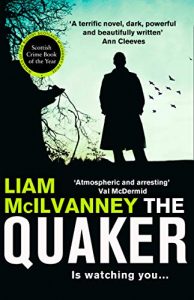 The Quaker, Liam McIlvanney, Harper Fiction
The Quaker, Liam McIlvanney, Harper Fiction
In the midst of a harsh Glasgow winter in 1969, DI Duncan McCormack is searching for a Bible-quoting murderer: the Quaker. The Quaker has already lured and killed three women after meeting them at a popular club – The Barrowland Ballroom – but so far attempts to capture him have been futile. When the body of a fourth woman is suddenly found, McCormack’s resolve stiffens as he plunges into a grim and intense pursuit of the truth. Based on the real-life story of serial killer ‘Bible John’, The Quaker is a darkly convincing portrayal of a city held captive by terror. The novel should also be commended for its effective use of multiple perspectives and skilful twists.
Smoke and Ashes, Abir Mukherjee, Harvill Secker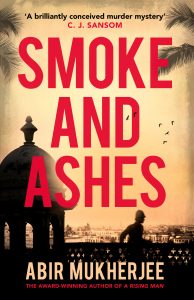
Smoke and Ashes follows Captain Sam Wyndham of the Calcutta police force – a secret opium addict who finds himself trapped in an illegal den during a police raid. As he makes his escape, he comes across a man who has been brutally murdered. And when he later finds a second corpse – apparently killed in the same ritualistic fashion – Sam begins to suspect that the two are linked. Fighting to keep his own vices in check, he teams up with Sergeant Banerjee to investigate the grisly deaths. Evocative and richly detailed, Smoke and Ashes should be praised for its powerful realisation of its setting – India in 1921 – and the strong narrative voice of the embittered, haunted protagonist.
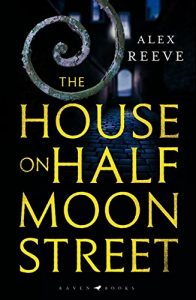 The House on Half Moon Street, Alex Reeve, Raven Books
The House on Half Moon Street, Alex Reeve, Raven Books
Leo Stanhope is a coroner’s assistant with a lifelong secret: he was born Charlotte – the daughter of a countryside reverend – but always knew that he was a man. Having run away to London at the age of fifteen, his dearest wish is to one day make a home with the woman he loves, Maria, and be free to live his truth without fear. But when Maria is murdered, Leo’s hopes are crushed and his freedom threatened. Heartbroken but determined, he vows to find her killer and becomes embroiled in the dark underbelly of the city. With its realistically gloomy Victorian ambience, well-paced plot and thoughtful characterisation, House on Half Moon Street is both gripping and tender.
Tombland, C. J. Sansom, Mantle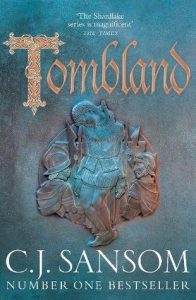
Two years after the death of Henry VIII, lawyer Matthew Shardlake is working for the old king’s daughter, Lady Elizabeth. When Edith Boleyn – the estranged wife of Elizabeth’s distant relation John Boleyn – is found murdered, Shardlake travels to Norwich to investigate. There, against the simmering backdrop of the peasants’ rebellion, Shardlake finds a dangerous, multi-layered plot waiting to be untangled. A sweeping, epic read, Tombland is to be admired for its lively evocation of Tudor England and effortlessly interwoven sense of mystery and unease.
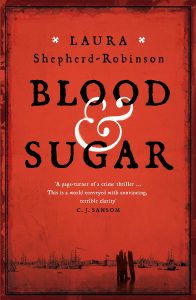 Blood & Sugar, Laura Shepherd-Robinson, Mantle
Blood & Sugar, Laura Shepherd-Robinson, Mantle
In 1781, prospective parliamentarian Captain Harry Corsham returns from the war in the US to find a chilling puzzle awaiting him. A body has been found in Deptford, horrifically murdered and bearing a slaver’s mark. At the same time, Harry’s friend, Tad Archer, has gone missing. An abolitionist, Tad had been gathering shocking information in the hope of bringing an end to the British slaving industry. Determined to find out what happened to Tad, Harry follows the trail of secrets into a web of danger and conspiracy. A thrilling and powerful debut, Blood & Sugar is both an immersive mystery and an unflinching portrayal of the atrocities of the slave trade.
The winner will be announced on the 24th October at the Leonardo Royal Hotel London City. Tickets to the award ceremony are available here.
Hi Elizabeth! Welcome to the Sapere Books blog!
Elizabeth Bailey is the author of THE LADY FAN MYSTERY SERIES – romantic Regency crime novels, and THE BRIDES BY CHANCE REGENCY ADVENTURE SERIES.
Can you tell us a little a bit about what first got you interested in writing?
I can’t think of a time I didn’t write. I dabbled for most of my young and adult life, but I was in my thirties when I became a member of a co-operative writing group with the idea of sending out each other’s work. I wrote several short stories and then decided to write a historical romance, a genre I had been reading from a child beginning with the novels of Georgette Heyer. That book, though it never saw the light of day, was the turning point. I loved writing it and felt I had at last found my true metier. I’ve been writing fiction ever since.
Do you have set writing times?
Mostly I write my first draft early morning in bed after I’ve had my tea. If I can get between 500 to 1500 words written, I feel I’m making progress. I try to get it all down without research, leaving notes to myself within the text where I need more data. The murder or where it happens, I will usually check out before I start, unless I add something new and have to go and find out about it before I can get on. I can’t start at all until I have names of the main characters and a general idea of what is likely to happen in the first couple of chapters. I actually don’t usually know who the murderer is when I begin. Nothing like making life interesting for yourself!
Seeing as you write historical fiction, do you find you have to do a lot of research?
These days with many years of historicals of the same period behind me I am so familiar with the time that my research is mostly for specifics. I have many books collected over the years which furnish me with the detail I need. My main focus of research is in the area of the murder and the internet is a mine of information on the subject. You can find contemporary sources relating to anatomical matters, which means I can be as accurate as possible according to knowledge of the era. However, I do turn to current material for exact descriptions of what happens, for example, when someone is bludgeoned, knifed or otherwise injured. All of which is fascinating to read about.
What part of the writing process do you find most difficult?
Struggling through against the odds when life intervenes. This happens and you just have to deal with it. It’s virtually impossible in this day and age to shut yourself away in an ivory tower to get your first draft done. I wrote a short book in a week once on a holiday. Another time I forced through 5000 words a day to get a novel done. But it’s not optimum. It doesn’t allow time for the filtering process that builds the minutiae of the story and generates ideas you hadn’t thought of until some trigger sets them off. Working steadily every day seems to build a book better, but it does mean you are subject to interruptions and getting back into it after a break is the hardest thing of all.
Do you find your characters start to control their own storylines?
Yes, they become totally real, and some characters are completely independent and go off in unexpected directions. The thing is, you invest them with life and then they become real people (albeit in a sort of ghost form in your head). They start behaving according to their character and you might have no idea of who they really are until they do this. Ottilia is a case in point. She was supposed to be a retiring female, letting Francis take the lead. Not a bit of it. She marched into centre stage the minute I set her on the page and stayed there. In the book I’m currently writing, I had a peripheral character take off in much the same way and seize quite a chunk of the story from Ottilia. Experience has taught me to run with it. I have a great belief in the Inner Writer knowing a great deal more than I do about the developing story. It really is like being two people sometimes.
Do you ever feel guilty about killing off characters in your crime series?
Apart from the initial dead body, I hesitate. The first death is the spur for the story, so that’s all right. We usually don’t know that person. But it’s very hard to kill off someone who has become a character in their own right. But that’s good, I think. It transfers to my heroine, who is allowed to have an emotional reaction to such a death.
Do you find it hard to know when to end a story?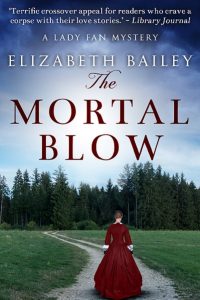
Usually the story comes to a natural conclusion. Then it’s just a matter of tying up loose ends and giving my lead characters a chance to mull and make decisions of their own. I like to keep the denouement fairly short. When the story is finished, that’s it. And there’s a maxim – always leave the reader wanting more. If you ice the cake too richly, they might be too satisfied to want another slice.
Which book by another author do you wish you had written?
Oh, that’s a tough one. For sheer quality perhaps, another long-time favourite, In This House of Brede by Rumer Godden. So subtle, engaging, insightful and just beautifully written. But then I would love to write like PG Wodehouse whose Jeeves and Bertie books I adore. I’ve had a go in a play I wrote for school when I was teaching drama, and I have a short story out in a similar style (To Catch a Thief). Or Terry Pratchett with such a discerning eye for the human condition.
Tell us something surprising about you!
When I was a teenager, I won two cups for target shooting with a 303 rifle. Now I couldn’t hit a haystack!
Laxton Village is believed to be the last remaining example in Europe where the Open Field System and Court Leet have been preserved. It boasts a unique 1,845 acre heritage estate — including 525 acres of unenclosed open fields — produces in excess of £230,000 per annum, and is of significant educational and curatorial interest. The village is now on sale for £7m.
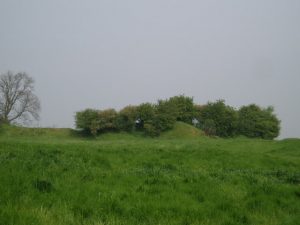
Castle mound: the site of an 11th-century castle in Laxton.
THE ESTATE
The Laxton Estate is situated in and around the picturesque village of Laxton, surrounded by rolling countryside. The village is linear and unusual in appearance, comprising 17 traditional red brick farmsteads in addition to a village pub and visitor centre. The majority of the estate is farmed under Agricultural Holdings Act (AHA) and Farm Business Tenancy (FBT) agreements. Each farm tenant benefits from a home farmstead and land let under AHA and/or FBT and a right to farm land within 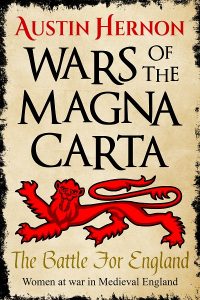 the open field system as administrated by Laxton Court Leet, an ancient manorial Court with legal status as a court of Law.
the open field system as administrated by Laxton Court Leet, an ancient manorial Court with legal status as a court of Law.
You can find out more about the history of Laxton from the Wars of the Magna Carta series. The first instalment, The Battle For England, features Laxton Castle, domain of the brave heroine Matilda.
Image credit:
Castle mound at Laxton, Nottinghamshire. Source: Wikipedia, contributed by Robert Goulden. Used under Creative Commons CC BY-SA 2.0 licence.
When did you first start writing? Did a specific event encourage you to start?
When I was six years old, I saw a TV programme about the Blitz, which as you can imagine was pretty alarming. I wrote a poem about it.
How much research do you do?
I am fascinated with the Victorian era and do a lot of research to try and get the details right. I read contemporary newspapers and journal articles, biographies and medical works. I study maps, census returns, directories, legislation, photographs, and art. I have about a hundred books just on the history of spiritualism.
Tell us about where you write / your writing habits.
I work from home and have a room which is my office. I don’t work set hours; even when I am doing the household chores, my mind is still working on my latest project or planning a new one.
What part of the writing process do you find most difficult? Starting, knowing when you’ve done enough research, the ending?
When I begin a project, I know where I am starting from and where I will end up, but I have to link the two in a way that makes sense. Every time I pause in order to find that natural link, I have to remind myself that I found it last time. It’s worked so far.
How real do your characters become and do they ever seem to control their own storyline?
They feel very real to me, and because I let themes develop naturally in my mind often the characters do things that I hadn’t necessarily planned but emerge from their personalities and situations, so sometimes they do take me by surprise.
Do you ever feel guilty about killing off characters or do you relish it?
Neither, but it is sometimes sad. It’s very hard writing about a character who I know is about to become a murder victim.
Do you find it hard to know when to end a story?
No, I know when it feels right to me.
What are you working on?
I am editing a new volume in the Notable British Trials series about the trial of the Mannings in 1849. I am also developing the plot for the fifth Mina Scarletti book, to be entitled His Father’s Ghost.
What are you reading right now?
Munich by Robert Harris.
What is your favourite book? Who is your favourite character?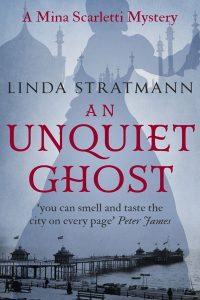
I have read thousands of books and it is impossible to pick one!
What book do you wish you had written?
See above.
Do you love any genres/books that are very different from what you write?
Most of my reading is non-fiction: history, biography, true crime, psychology. In crime fiction, I tend to read books with modern settings or if historical, a very different time period from the one I write about.
Tell us something surprising about you!
I prefer pickles to sweets!
When did you first start writing? Did a specific event encourage you to start?
There has never been a time when I didn’t write. As a child, my idea of a perfect game was to tell a story to my teddies, then write it down. It was never a conscious decision, it was part of me then and it still is now.

How much research do you do?
It entirely depends on the story. For a while I wrote film scripts, mostly comedies, and they didn’t need any research. Likewise my first few attempts at novels (still languishing unpublished!). One story, The Music Makers took all its chapter heading from the wheel of the Major Arcana cards in the Tarot pack. Although I was a fairly proficient Tarot reader back then, I did research other, wider meanings, for the cards to add extra depth to the main character’s adventures.
The Marquess House Trilogy, which has a split timeline comprising of a present day strand and a historical section has taken years of research. Book one: The Catherine Howard Conspiracy was actually not my intended starting place. The big reveal that appears in book two: The Two Elizabeths was the kernel of the idea for this story and, over the years, I have written many different versions of it trying to make it work. However, none of them were quite right and after several years of juggling work, life and researching Elizabethan England I realised the only way I’d be able to capture this monster of a story on paper was to split it into three separate tales, rather than trying to cram it into one book. Three books, one for each piece of jewellery: two ruby rings and a silver locket.
It was actually devastating because it meant starting again from the beginning. In true frustrated writer style, rather than face this unhappy truth, I wrote a comedy instead, entitled The Patron Saint of Married Women, which was set in the present day and needed very little research. In. Your. Face. History.
In the end, I caved in and began researching Henry VIII’s fourth and fifth brides. I also made the alarming decision to dump my two main characters: Isabella and Oliver. I never liked them much anyway. The name Perdita had been running around my head for a while. From reading Dodie Smith’s One Hundred and One Dalmatians when I was younger, I knew it meant Little Lost One and somehow this seemed appropriate for my main character. Then one morning, I woke up with the question: “Who is Piper?” running around my head. Immediately, I knew she was Perdita’s twin sister and something clicked into place.
The very very first version of this story featured Isabella (now gone) mourning her twin sister who had died under mysterious circumstances on an archaeological dig after she had unearthed a silver locket. The idea was that she had been murdered by MI One Elite. Strangely, the nasty old Watchers were there from the beginning, as was Mary Fitzroy, James Rivers and Alistair Mackensie. Jerusalem was always around too, although it took me a while to settle on its true nature. Warren Dexter was another one who survived the character cull. However, it wasn’t until Perdita and Piper popped up that the story suddenly opened up before me. Then, Kit arrived. He had been through a number of names and he finally found an identity because I quite fancied Kit Harington who plays Jon Snow in Game of Thrones. Yes, it’s an embarrassing admission but he was the inspiration for Kit and once he had his name, the last piece of the puzzle was in place and the story flooded out.
I’ve long since moved past my toe-curling crush, though. Ahem.
Anyway, in answer to your question, at present, several months of research and writing of detailed timelines. By gathering all the information into one huge chart, it’s easier to write fluently and present a more rounded and believable version of my historical periods.
Tell us about where you write / your writing habits.
I have a purpose built writing hut in the garden with insulation and a heater. I write every day and, at the moment, am lucky enough to be able to treat it like my day-job.
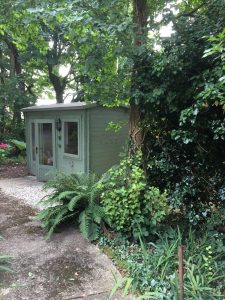
What part of the writing process do you find most difficult? Starting, knowing when you’ve done enough research, the ending?
It varies. I love the lure of the blank page. Every piece of paper is an adventure waiting to unfold. Knowing when you’ve done enough research is a tricky one but there comes a point where you have to plunge in and see what happens. I don’t like writing endings, not because I don’t like them but because it means you’re saying goodbye to your characters.
How real do your characters become and do they ever seem to control their own storyline?
Very real. They all seem to end up taking over their own storylines. Sometimes, I even argue with them. Although perhaps I shouldn’t have admitted that…
Do you ever feel guilty about killing off characters or do you relish it?
Never! I worry about killing them off for different reasons. What about if I suddenly realise I need them again but they died in Chapter Four?!! EEEKKK!
Do you find it hard to know when to end a story?
Usually I know the end before I begin. The Marquess House trilogy has proved more troublesome though because in my head, it’s one long story, so realising I had to make three endings, instead of just the one at the very very end of book three, has taken a while to adjust to.
What are you working on?
Part three of The Marquess House trilogy. It’s working title was always Prince Oliver but I don’t think this works any more. The title will arrive when its ready.
What are you reading right now?
The Moon Sister by Lucinda Riley. It’s part five of her Seven Sisters series. I only recently discovered these books but I’m really enjoying them.
What is your favourite book? Who is your favourite character?
This is a tough one. How do you choose between so many friends? And also, do I go for something literary and make it look as though I’m very high brow or do I tell the truth?!
For a long time now, my favourite book has been Harry Potter and the Prisoner of Azkaban. I was going through quite a tough time when I began reading these books and, not only was Hogwarts a wonderful place to hide, I was awed by J K Rowling’s brilliance. Goblet of Fire had just been released, the films had been cast and the storm of Harry Potter was building. I never like making judgements on phenomena unless I’ve read/seen/visited them, so I bought the books. Philosopher’s Stone hooked me from page one. Chamber of Secrets worried me – who was Dobby? Was he good or bad? – but when I read the third book with its fabulous twist with Scabbers and the appearance of Sirius Black who had first been mentioned in chapter one of book one, I realised this was more than a series of children’s books. This was truly magical. I’ve asked for help at Hogwarts many times and it’s always been given.
My favourite character is Hermione Granger. Although Harry is pretty amazing too.
I also love Ballet Shoes by Noel Streatfeild and Moll Flanders by Daniel Defoe.
What book do you wish you had written?
Apart for the Harry Potter series? The God of Small Things by Arundhati Roy or The Passion by Jeanette Winterson.
Do you love any genres/books that are very different from what you write?
I try to read a broad cross-section of genres. If a story is well-written, it’ll grip you no matter what the genre. I try never to suffer from literary snobbery. Every book is worth trying, you may not make friends there but you don’t need to be rude!
Tell us something surprising about you!
I play musicals in the background while I write.
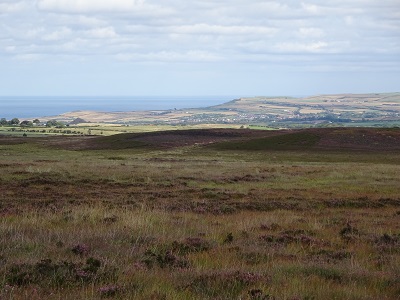
The North York Moors national park has one of the largest expanses of heather moorland in England covering an area of 554 sq miles. For centuries people have crossed this exposed, wild, boggy moorland for trade, social and religious reasons leaving a network of fragmented stone pathways that are lovingly walked and explored by hikers today. All who do respect this mainly inaccessible landscape, which is both beautiful and dangerous to traverse. But what tales these ancient paths could tell of the people who have trodden them over the centuries.
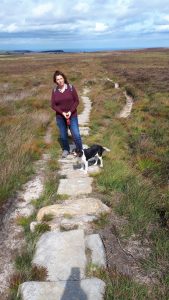
The oldest broken pathways, known locally as ‘Monks trods’ could date back to the Neolithic era. Certainly Roman soldiers have used some of the broader causeways near Whitby. The connection with monks stems from the medieval period when abbeys flourished within the region. Today we see the ruins of Whitby, Rievaulx, Guisborough and Mount Grace Priory to name but a few of these once great communities. These monasteries often housed large numbers of people and linked to other communities by the network of pathways. In Medieval times wool would be transported on them to ports such as Hull and from there to markets overseas.
The monasteries often owned farms and land miles apart. In For Richer, For Poorer I linked the two fictitious towns of Gorebeck and Beckton by one such trod that cuts across Gorebeck Moor. Gorebeck Abbey School was linked to Beckton Abbey by trade and the pathway, although rugged and unwelcoming it was known to Parthena. This was no easy route of escape by, especially at night time, it took courage and daring – but essentially local knowledge, or else it would certainly have been tantamount to a death wish. This summer I was caught out in a sudden horizontal rain storm on one of the Quaker’s Causeway, near Commondale and even with modern waterproofs and hiking boots the wind had a bitter chill.
Parthena’s pursuer, like Beth and Willoughby in To Love, Honour and Obey had to travel in single file as the stones were only designed to take a train of pack horses travelling in a line as goods were regularly transported by pack horse.
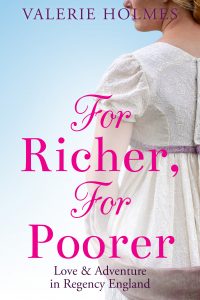
Beyond the medieval period the need to transport coal, charcoal, jet, alum and lime grew. Fresh fish from the coast needed to reach its market as quickly as possible whilst it was still fresh. Wagons would easily become bogged down in such conditions and so for centuries the pack horse was essential.
These are some of the legitimate uses for these ancient routes, as well as the need for communities such as The Quakers in the early eighteenth century to reach meetings and friend’s houses. They were also essential for people to reach the mills and towns for work as the centuries turned.
However, in the early nineteenth century, when many of my stories are set, smugglers also had local knowledge, could pay a man more than a farmer’s wage and they also needed to disperse landed contraband as quickly and efficiently as possible. Therefore, many of my stories have mentioned the use of the old trods for this purpose.
Once roads were built to cross the moorland then the need for the trods diminished and some of the ancient stone was reused for building. These roads may have even been built over the original paths as their way was the most direct. But what is left provides an interesting connection to the past and a way for people today to access this beautiful wilderness today.
When did you first start writing? Did a specific event encourage you to start?
I started writing when I was a teacher. I first wrote short plays for performance. When I gave up teaching in 2012, it was the bicentenary of the birth of Charles Dickens. When I read that he had a secret desire to be a detective, I wondered if I could write the crime novel that I had always wanted to write, so I gave it a try with Dickens as my detective.
How much research do you do?
Because my novels are historical crime novels, I need to do a lot of research into Dickens’s life and times, and into nineteenth century forensics. I need to know what the Victorians knew about poison, or stabbing, or shooting, or drowning and post mortems in the mid-nineteenth century.

Tell us about where you write / your writing habits.
I write in a little room in my house. I often write sections of the novel long-hand and then type them up and make changes as I go. I always carry a notebook to jot down ideas when I’m on a train or waiting for someone – you never know what you might overhear!
What part of the writing process do you find most difficult? Starting, knowing when you’ve done enough research, the ending
I find it easy to start. Often the beginning of a novel comes from something I’ve read, especially something from Dickens’s letters. Then I get stuck in working out the plot, especially when I find that X couldn’t have done the murder at that point because she/he was somewhere else at the time!
How real do your characters become and do they ever seem to control their own storyline?
Very real – that’s why I enjoy writing a series. You can bring characters back. It’s very odd how characters you expected to play a minor part in the story start to develop in ways you had not planned and begin to play a major role. Then they seem to have a back story and you think: where did that come from?
Do you ever feel guilty about killing off characters or do you relish it?
It’s always satisfying to get rid of the murderer because that means the case is solved. And there have to be other victims – one murder doesn’t make a crime novel. You can’t help relishing the dramatic deaths, but sometimes you do feel sorry for the victim. Then you think: sorry, but you’ve had your lot, it’s time for another killing – keep up the suspense!
Do you find it hard to know when to end a story?
Not in the sense that you know it’s over when the case is solved, but you also have to think carefully about the very last paragraphs. You want to leave the reader thinking about the effects it has all had on the characters who are left and what their futures hold – if they have one.
What are you working on?
A novel which begins in Ferrara where Dickens went in 1844; I found a letter he wrote from there in which he describes some girls looking down into a stretch of water. It was twilight, the sun was setting and the walls of the castle were blood-red. Dickens writes that he knew the place although he had not been there before and that it chilled his blood. I wondered what those girls were looking at in the water and why Dickens was suddenly frightened. Murder?
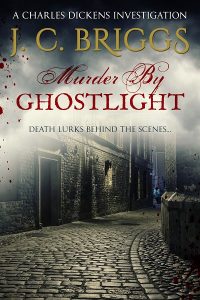
What are you reading right now?
Bleak House
What is your favourite book? Who is your favourite character?
Great Expectations. Miss Havisham.
What book do you wish you had written?
So many, it’s too hard to choose, but there’s a wonderful book: Pinkerton’s Sister by Peter Rushforth, which is so rich in character and incident and full of all kinds of literary allusions that I can’t help wishing …
Do you love any genres/books that are very different from what you write?
One of my favourite authors is William Trevor; I’ve just finished The Silence in the Garden which is about Ireland before the First World War. I love fiction about Ireland.
Tell us something surprising about you!
I was the voice over in a television show in Hong Kong. I was a puppet named Violet the Vulture – I played her as a kind of avian Lady Bracknell. My husband, who wrote the show, was Barney the Bear, and we had a kangaroo called Alice Springs.
Are you working on a new series set in the Age of Sail? Have you written a naval thriller set during the World Wars? Are you passionate about seafaring stories? Sapere Books wants to hear from you!

We are actively looking to acquire nautical fiction from both debut and established authors. We are particularly interested in historical naval fiction, nautical thrillers, and books in a series.
If you are an author who owns the rights to a previously published naval series, or a writer working on a new nautical novel, please get in touch and tell us about it!
Email our Editorial Director, Amy Durant, directly with some information about your nautical writing and a synopsis of your naval novel and we will get back to you as soon as possible.
We hope to hear from you soon!
When did you first start writing? Did a specific event encourage you to start?
In the 1990s. I can’t be more specific as I went to several creative writing classes, usually with the same tutors. The class would start out well attended, then people gradually would drop out – usually in winter. Then the following year the funding would change and we’d start up again at a different venue. But I always persevered and about three or four of us went to the same classes, which I enjoyed very much. Finally one tutor suggested I sent off some of my stories to a magazine. The first one was rejected but the editor must have seen something in my writing and made some useful suggestions. So luckily my next one was accepted by Ireland’s Own. I still have the cover framed on my wall. It’s dated August 1999 and has the picture of a Connemara pony on the front.
How much research do you do?
For Song of the Shuttle I went to Quarry Bank Mill, a working cotton mill near Manchester owned by the National Trust. The volunteer guide on duty was so helpful, explaining how the machines worked, then demonstrating them. He was really patient answering all my questions. From a large second hand book store in South Manchester I was lucky enough to find a book from the television series about the American Civil War shown back in the 1990s. It was packed with information and original photographs which was invaluable to my research. Other books like ‘The Hungry Mills’ and ‘Reveille in Washington’ helped enormously and also a map showing the major battles of the war.
For subsequent books I’ve turned to Victorian history which has always interested me. The internet is invaluable too. Where else could you discover the uniform that an American military hospital orderly wears?
Tell us about where you write / your writing habits.
I’ve set up office in a small bedroom since my son and daughter have left home. It overlooks the back garden and I can see the small birds bobbing about in the trees. I’m afraid I’m not an organised writer or set time each day for writing. I have a habit of waking up at an unearthly hour with an idea in my head and can’t get back to sleep until I’ve typed it out. I did try to write those ideas down on a pad by the bed but couldn’t read my writing in the morning. So I drag on a hairy old dressing gown – and tracky bottoms in winter – and sneak off into my office for an hour or so. Then I slip back into bed and sleep soundly.
What part of the writing process do you find most difficult? Starting, knowing when you’ve done enough research, the ending?
Most of my stories are written in my head long before they reach the page. Then when I have time I want to get down the information as quickly as possible. Of course I have to go through it all again and edit it. Sometimes I seem to write in Polish! I’m not keen on editing and don’t like rewriting at all.
How real do your characters become and do they ever seem to control their own storyline?
My characters do seem to take on a life of their own and I instinctively know how they will act. This is a very perceptive question as many times my ideas and plots will change when faced with what a character would do.
Do you ever feel guilty about killing off characters or do you relish it?
I have sat and wept when one of my characters died. Normally it’s only the baddies that ‘get it’. I feel they get what they deserve.
What are you reading right now?
At the moment I’m reading a spy novel by John Le Carre and persevering with it. I get annoyed by the macho attitude of the men though! I have Lamentation by C. J. Sansom waiting in the wings. I love his Shardlake novels.
What is your favourite book?
My favourite book is Jane Eyre. I’ve always loved it from being young when I had the Dean and Son version for young readers.
What book do you wish you had written?
Something brilliant like The Book Thief. I’ve recommended it to so many people and they’ve all enjoyed it.
Do you love any genres/books that are very different from what you write?
I have very eclectic taste. I really enjoy Terry Pratchett books. Patrick O’Brian’s seafaring novels are a favourite and also Lyndsay Davies’ Roman detective Falco. Although they are historical novels, they are very different from the romances that I’m writing.
Tell us something surprising about you!
I’ve had a painting exhibited in Manchester Art gallery. I won a competition where all the art classes round the city sent a painting that was inspired by one of the Gallery’s paintings. It was called ‘Things to Do’ and in one corner featured a cosy armchair, a book and a cup of tea. The rest of the canvas had an ironing board, a dirty frying pan, an un-ironed shirt and lots and lots of socks – black with a different coloured heel. None of the socks matched! The blurb was that I’d rather sit reading than doing all the chores. Along with a certificate I received a bag of art goodies. Unfortunately I don’t have time to go to any art classes nowadays.
Ellen Tyrell’s Nose and Other Suspicious Circumstances
With thanks to the British Newspaper Archive
I am looking for a drowned girl. My old friend, Professor Swaine Taylor will, no doubt, provide the grisly forensic detail in his Medical Jurisprudence: ‘the eyelids livid, and the pupils dilated; the mouth closed or half-open, the tongue swollen and congested … sometimes indented or even lacerated by the teeth …’
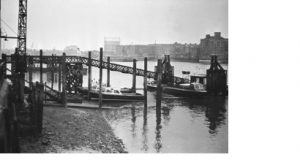
I need an inquest on said drowned girl; this is where the British Newspaper Archive comes in. There are drowned girls aplenty in London in the decade 1840-49. Poor things, dragged from the Thames, the Regent’s Canal, the Surrey Canal, the New River, the Serpentine, the lake in Regent’s Park, from under Waterloo Bridge – a favourite spot for those seduced and abandoned girls. There they lie stretched out on muddy shores and banks, their bonnets askew, one boot missing, or both, their faces pale like Millais’ Ophelia, or more likely, bloated and bruised, or half-eaten by decomposition – or rats. Their bodies sometimes float, buoyed up by petticoats – the effect of air retained by the clothes, or the presence of gases. Sometimes a thin hand grasps a clump of weed which, according to Professor Taylor, indicates that the victim went into the water alive. Did she fall or was she pushed? Suicide, most often.
I find the case of the suicide of two young sisters dragged from a Leeds canal in April 1847, tied together by a handkerchief. The handkerchief is pitiable somehow, and memorable. Dickens must have read of that case for he uses the same circumstance in Our Mutual Friend. Something of a thrill in contemplating that, but I need only one girl.
I need an unknown drowned girl, unclaimed, buried at the expense of the parish, and forgotten. Somewhere in a village, a mother wonders about her lost child. She will never know what became of her ruined darling. The Morning Post in February 1842 explains: ‘In London the bodies are taken to any obscure vault, public house, or police office. The Coroner directs the parish to advertise the body, often in vain.’
I find several cases of unidentified females in the newspaper archive. In July 1841, according to The Morning Advertiser, a young woman was pulled from the London Dock. She was never identified. I am intrigued by the report’s dark observation that ‘No one could walk into that water by accident.’ Unknown, too, is the identity of the ‘fine-made ’young woman taken from the Serpentine in October 1845 and deposited at St George’s Workhouse. Yet she has a distinctive mole on her left cheek, dark hair and hazel eyes. Surely somebody missed her. Seduced and abandoned, perhaps, like poor Eliza Luke found in the New River in April 1844.
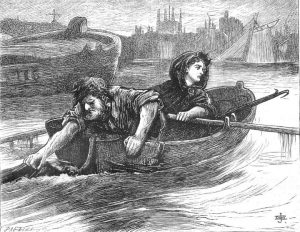
However, this is a crime story, so, naturally, I need a drowned, unknown, murdered girl. This is more difficult. Such is the damage done by the water, or the bridge, or the rocks of some lonely reach that it is often impossible to find enough evidence of murder. However, there is the case of Eliza Rayment found in the River Thames in October 1847. There is a deep cut under her chin. Four inches in length, an inch in depth, so reports Mr Bain, the surgeon, at the inquest, and there are ‘two arteries divided’. The wound might have been inflicted by the deceased, but ‘a person using the right hand would naturally make an incision on the left hand side.’ Eliza Rayment was right-handed. Mr Bain attributes death to the loss of blood from the wound. Poor Emma Ashburnham who was formerly Emma Meyer had once lived ‘in some splendour’ in York Road under the protection of ‘a gentleman of fortune’, but it is not known how she came to be in the river at Waterloo Bridge with a deep and ugly stab wound in her side.
Blood brings me to Ellen Tyrell and her nose. Ellen was found in the Surrey Canal in August 1845. Mr John Hawkins, the surgeon, finds an abrasion on the right side of the nose, but from the decomposition of the body he is unable to distinguish any other external marks of violence. Given that she was seen in the company of a man, not her husband, the night before she disappeared, the inquest is adjourned for the purpose of producing further evidence.
Oh, Eliza Rayment, what a mystery, what a suggestive tale, a married woman whose whereabouts were unknown for some days before your death. Who were you with? Emma, who was that ‘gentleman of fortune’? Alas, neither of you is for me, and Ellen, your nose, telling though it is, does not serve my purpose. I am ‘Oh, that I had been content with a cut throat, or a stabbing, but, in the interests of my plot, the victim must be strangled or I must rewrite the whole damned thing.
There is evidence I do like: the 1847 case of the unknown drowned young woman wearing a false plait at the back of her hair; the one in 1842 in which an umbrella is found nearby, bearing on its ivory handle the initials ‘F.H.’ And I like especially, the single earring she is wearing. I have a fancy for a single ruby like a drop of blood in my victim’s ear.
I dig deep into the newspaper archives and I find it – just the one, and the indefatigable Mr Bain is on hand to assist. The body was found in October 1848 near Battersea Bridge, much decomposed, appearing to have been in the water some time. Nevertheless, Mr Bain finds evidence of a ligature encircling the neck, though what this might have been he cannot say.
It is quite enough for me. Possible death by strangulation.
Oh, all right, I admit it: the body was that of a sailor. But, it did happen. Evidence of a ligature was found. I’ll just have to put an ‘s’ before the ‘he’. No one will know.
‘F.H.’? Names: Fanny? Florence? Flora? Ah, here’s a name in the archives: ‘Harvest’. I have her: Flora Harvest, the Grim Reaper cometh.
The Murder of Patience Brooke by J. C . Briggs

The Cooper Museum, housed in a small building in the heart of historic downtown Upland, offers a cozy and often crowded venue for local events. A favorite place to hang out with city residents, this cheery place often invites authors whose books feature the history of American towns and people, especially people from Upland, California.
I wrote my first edition of He Wrote Her Every Day in Upland and printed twenty copies in time to celebrate my mother’s 90th birthday. Based on letters Mom had saved from my father in Germany during WWII, the book was my mother’s gift to share with the family. This hard-cover version of their story includes photographs and follows a narrative using all the documents and souvenirs my mother saved. When I received an invitation to present my book on Author’s Day at the Cooper, I was delighted—and a bit apprehensive.
I decided to prepare a visual display of a few of Dad’s letters and many of the souvenirs. Did I mention that Mom saved everything? I needed three tables, but managed to make do with two. A three-foot square map mounted on a display board earned center stage, balanced between my tables. It was also a place I could hide if no one showed any interest in my book.
The map, sent to all the soldiers and their families from the Army post-war, depicts the route this Infantry division traveled from the beginning of the war until the final return of the last Occupation troops. So when the recommissioned Queen Mary finally brought Dad home, Mom already had the map of the route taken by his troops known as the Railsplitters.
Our afternoon of book signing invited walk-through traffic in the patio area outside of the small museum. A beautiful afternoon in California promised our group of about a dozen local authors a busy opportunity to talk to our neighbors about our books. I was hoping for a few sales and a chance to meet my fellow writers.
Flattered when the assistant curator pulled a chair up at my table, I smiled widely as he began to go through all of the V-mails, coins, K-ration kit remnants, and the seventy-five-year-old postcards that make up my father’s collection. He looked through the assemblage of bits and pieces that had been the focus of my writing for about a half hour before, at last, he raised his head and just said, “Wow!”
Hungry for some positive feedback, I answered by asking, “Wow what?”
His response was a surprise. “You should not have all of this sitting out here in the sun for anyone to handle. This should be in a museum.” I thought he was trolling for a donation to the Cooper, but no, he assured me that mother’s bits and pieces needed a place where scholars could read the primary documents and preserve them for posterity.
He told me about the National WWII museum in New Orleans, LA. It took me a year to do it, but Kim Guise, curator of the museum in New Orleans, guided me through the process and helped our family contribute the collection to them. Mom was tickled to sign the donation papers and make it official. The museum staff is currently working on a display of the letters and souvenirs of Private James William Hendrickson, Jr. It is, according to Guise, the largest collection of letters and documents from an individual American soldier.
This was exciting, but the best experience at the Cooper came on yet another day when my display had been transferred from the originals to mere copies. The Railsplitter Map held pride of place and looked as sharp and clear as the originals.
He Wrote Her Every Day will be published by Sapere Books and is coming soon!
Sapere Books are publishing books of mine from two different series involving two different detectives.
One, involving Lieutenant Josef Slonský is set in 21st century Prague; the other, featuring the university lecturer Master Mercurius, takes place in 17th century Netherlands. There are obvious differences in setting that inform the writing.
Slonský is a career policeman. He is inclined to take the occasional drink to get the mental cogs turning faster. There is nothing much in his life except his work, and since he is 58 when the series starts, the threat of retirement looms large. Slonský has all the support that modern science can offer, including a mobile telephone, though he does not really know how to do anything beyond making calls on it.
Mercurius is very much an amateur, an accidental detective who falls into the work when a series of abductions in Delft leave the local authorities baffled, so they send to the University at Leiden for a clever man who might help them solve these; and the Rector sends Mercurius. He is a young man, only 33, a lecturer in moral philosopher and an ordained minister, and he has little in the way of science to help him.
To my mind, though, none of these is the major difference between the series. I award that distinction to the fact that Slonský books are written in the third person, whereas Mercurius narrates his; and I thought it might be instructive to discuss why that is so.
I would love to say that it was the result of a carefully balanced decision, weighing all the factors for and against either approach, but if the truth be told the stories just came out that way. In my head, the action in Slonský appears as a film in which I stand back, observe, listen and record, whereas the Mercurius books involve me as a character in the tale I am telling. I toyed with telling Mercurius in the third person, but it didn’t feel right, and I have spent a bit of time thinking why that might be.
I think the reason is that Slonský is a big character, but he has a large regular supporting cast and it is important to me that we should get to know them. If he were also the narrator, I think he would dominate too much. Mercurius, on the other hand, is the only character who appears in all that series of books, and as the only consistent element the story has to pivot on him anyway.
This is not just of analytical interest. Many crime novelists consistently favour one or the other approach. I am prepared for either, but it changes the way the story develops. In Slonský stories things can happen when he isn’t around; Mercurius only knows what he sees and hears. That inevitably leads to a slower unwinding of the evidence, because it would seem forced if all the clues turned up in an afternoon. Slonský can send his colleagues out to investigate several lines of enquiry and bring them back together for a conference; Mercurius spends a lot of time travelling to discover things for himself. There is no telephone or telegraph system that he can use, and he does not possess a horse.
There have been rare examples of writers changing the voice during a series – Conan Doyle had Holmes writing one of his stories, for example – but generally once the choice is made, you’re stuck with it. It seems strange, given how important it is, that I am not more systematic in my selection!
LYING AND DYING, the first thriller in Graham‘s Slonský series, is available to pre-order now.
This is the first question for the crime writer, I’ve discovered. A tad macabre, but that’s the genre.
Hello there, victim, how would you like to die? I can strangle, bludgeon, knife or poison you, just for starters. But if that ain’t good enough, let’s be inventive. The sky’s the limit. The other day someone got mirrored to death in Midsomer Murders!
Problem is, the moment you decide how to kill someone, you’ve immediately got to find out what that’s going to do to their body. Enter medical research. That leads backwards to what your sleuth can and can’t notice and what it will tell her. She has to work out how it was done before she can figure out who dunnit.
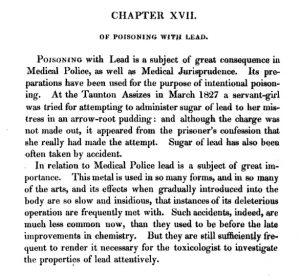 Just to complicate matters, when you set your crime in a historical context, you’ve got to find out what your medical man would have known at that time. Which isn’t what he knows now by a long chalk. At which point, thank heavens for the internet!
Just to complicate matters, when you set your crime in a historical context, you’ve got to find out what your medical man would have known at that time. Which isn’t what he knows now by a long chalk. At which point, thank heavens for the internet!
I turned up the most marvellous contemporary treatise on poisons on Google books, which tells me exactly what was known or thought about it, as well as how to recognise it, for every possible poison you could think of, and some you couldn’t. This was for the third book in my Lady Fan Mystery series. You can also dig up lots of accounts of horrific 18th century murders, which is extremely helpful, thank you, generating plenty of ideas.
There’s a strange satisfaction about killing victims off, I find. Does this mean I’m a closet murderer? Let’s be charitable, and say that it’s pure imagination and the writer’s mind. After all, I may kill them, but I’m also revenging their deaths and seeing that justice is done.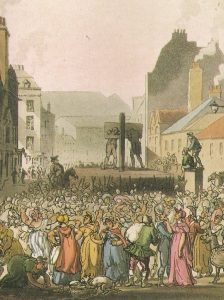
The other thing I’ve found is that you can’t avoid the inevitable exposition where your sleuth says how it was done. I’ve managed to steer clear of the cliché of gathering suspects together for the purpose, though, and tried to make it a natural part of the investigation process. But as a reader I wouldn’t be satisfied if the puzzle wasn’t somehow explained.
I don’t honestly think I’m going to spend too long worrying over the how-am-I-going-to-kill-you question. Ideas for future books seem to leap out at me with images of full-blown murders ready made. And the other common denominator? When I start writing the book, I haven’t a clue who dunnit or why. The fun of the genre is surprising myself with the answer.
It’s a truism that history is a set of facts left to posterity by the winners, and for historical novelists like me there’s always another ‘take’ on every so-called ‘fact’ we’re taught at school. A prime example of that is the enduring legend of ‘The Princes in the Tower’.
The first to get their stories organised were the Tudors who benefitted considerably from the unexplained disappearance from the Tower of London of the Yorkist royal heirs Edward, Prince of Wales, and Richard, Duke of York. 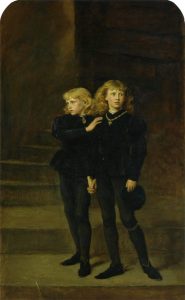
When Henry Tudor defeated Richard of Gloucester in an obscure field in Leicestershire we now know as ‘Bosworth’ (even though that town didn’t exist then), there was no one left on the Yorkist side to challenge his claim to the throne, given that the princes were no more. But it was essential to point the finger away from ‘the person most likely’ – the obvious suspect for the disappearances/deaths, and the Tudor propaganda machine swung into action.
Sir Thomas More possible lived to regret the assistance he gave to Henry VIII in perpetuating the myth that the person behind the disappearances of the princes from the Tower had been a close relative of theirs, namely their uncle. But More was the first to point the written finger at Richard of Gloucester, particularly after Sir William Tyrell, during the reign of Henry Tudor, allegedly confessed to having done the job in the pay of Richard. But tortured men will eventually say whatever their torturers want to hear, and the alleged confession came, second hand, through the mouth of the torturer.
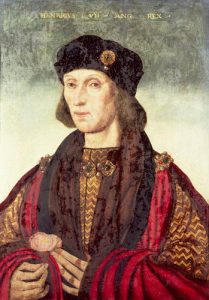 Never one to miss an opportunity to ingratiate himself with a royal patron, that literary prostitute William Shakespeare built Thomas More’s accusation into a horror story of a crook-backed, slew-footed, psychopathic freak who did away with anyone who stood between him and the throne. Actors such as Laurence Olivier and Benedict Cumberbatch then provided us all with a visual image to go with the verbal hype. The net result of all this ‘fake news’ was that we all grew up believing that Richard III had done for the two little boys under his guardianship.
Never one to miss an opportunity to ingratiate himself with a royal patron, that literary prostitute William Shakespeare built Thomas More’s accusation into a horror story of a crook-backed, slew-footed, psychopathic freak who did away with anyone who stood between him and the throne. Actors such as Laurence Olivier and Benedict Cumberbatch then provided us all with a visual image to go with the verbal hype. The net result of all this ‘fake news’ was that we all grew up believing that Richard III had done for the two little boys under his guardianship.
But spin the wheel 180 degrees, and there was someone else who benefitted equally from a sudden absence of Yorkist claimants to the English throne. He had an alibi, of course, because at the most likely date of the crime – the Summer of 1483 – he, Henry Tudor, was in exile in Britanny.
But back home in England, ‘Mummy’, the formidable, wily, scheming Margaret Beaufort, was preparing the runway for her favourite son’s safe landing with an invasion force. She also had a useful second son – Henry’s half-brother the Duke of Buckingham – who was Lord High Constable of England, with responsibilities that included security at the Tower of London. Go figure, as they say.
Having written a novel from the Tudor perspective (The Flowering of the Tudor Rose), and having suffered death by blog from dedicated ‘Ricardians’, I took up the case for the defence in Justice for the Cardinal, due for publication by Sapere Books later this year. The central character in this novel is Richard Ashton, grandson of the Duke of York who escaped from the Tower, only to be executed under his assumed name of ‘Perkin Warbeck’ by a paranoid Henry VII.
‘You pays your money . . . .’, as the old saying goes. The jury will forever remain out on who really ordered the murder of the princes. In the meantime, we historical novelists can play on both halves of the pitch.
The heroine of the Mina Scarletti books is not based on a specific individual; however when I created my diminutive protagonist two people were in my thoughts, one of whom I knew personally.
Eva was the aunt of a friend of mine. She had a very severe distortion of the spine, but the thing that I remember most about her was her sweet smile. I never got to know her well and she died when I was a child.
Annie Jane Fanny Maclean was delicate and very small, due to the curvature of her spine and she walked with a limp. In 1879 aged 33, she inherited some family property. She also attracted the attention of Lewis James Paine, a 49 year old insurance salesman in need of money. 
Unknown to Miss Maclean, Paine was a married man, although he denied it when challenged by her suspicious family. By July that year they were living together as husband and wife. Annie had been a moderate drinker, but Paine plied her with alcohol, sometimes forcing her to drink it against her will, and as she fell more and more under his control, he withheld food.
In September, in a very weakened state, she was induced to sign a deed making over her property to Paine. In less than a month she was dead.
Paine was tried for the wilful murder of Annie Maclean at the Central Criminal Court in February 1880. The question for the jurors was had Paine deliberately set out to kill, or had he caused death through recklessness and negligence? He was found not guilty of murder but guilty of manslaughter.
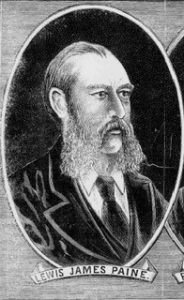 Paine made a long statement to the court, claiming innocence, but the judge, who clearly despised him, stated bluntly that he didn’t believe a word of it. He stated that Paine was guilty of manslaughter ‘in about as cruel and barbarous circumstances as I ever remember having heard of. . . . Had you been guilty of murder, you would most unquestionably have been hanged, as you richly deserve to be.’ (Times 25 Feb 1880 page 11) Paine was sentenced to imprisonment for life. He died in 1897.
Paine made a long statement to the court, claiming innocence, but the judge, who clearly despised him, stated bluntly that he didn’t believe a word of it. He stated that Paine was guilty of manslaughter ‘in about as cruel and barbarous circumstances as I ever remember having heard of. . . . Had you been guilty of murder, you would most unquestionably have been hanged, as you richly deserve to be.’ (Times 25 Feb 1880 page 11) Paine was sentenced to imprisonment for life. He died in 1897.
In commenting on the case, The Times pointed out that the victim’s appearance was not an insignificant fact, and this led me to reflect on the vulnerability of women in the Victorian marriage market, especially those with a disability, who if they had property could be manipulated by cruel and unscrupulous men.
Marriage and motherhood were considered to be the primary and most desirable roles for Victorian women, and Miss Maclean must have seen Paine, perhaps her only wooer, as her chance of happiness.
In Mina Scarletti, who has been told by her doctors that she must never think to marry, I have created a heroine who is able by her unique insight and force of will to make a challenging and fulfilling life for herself.


